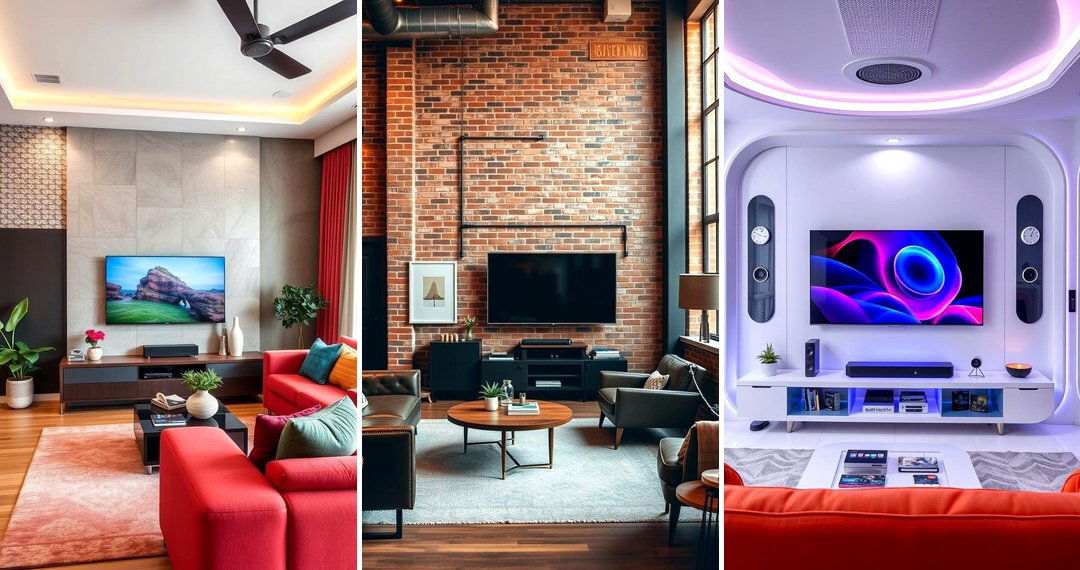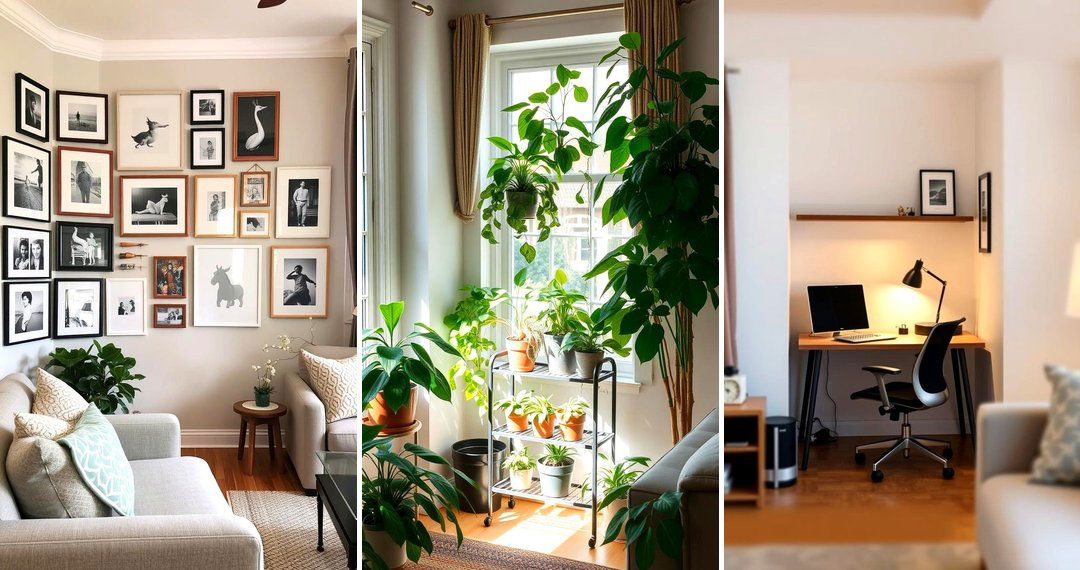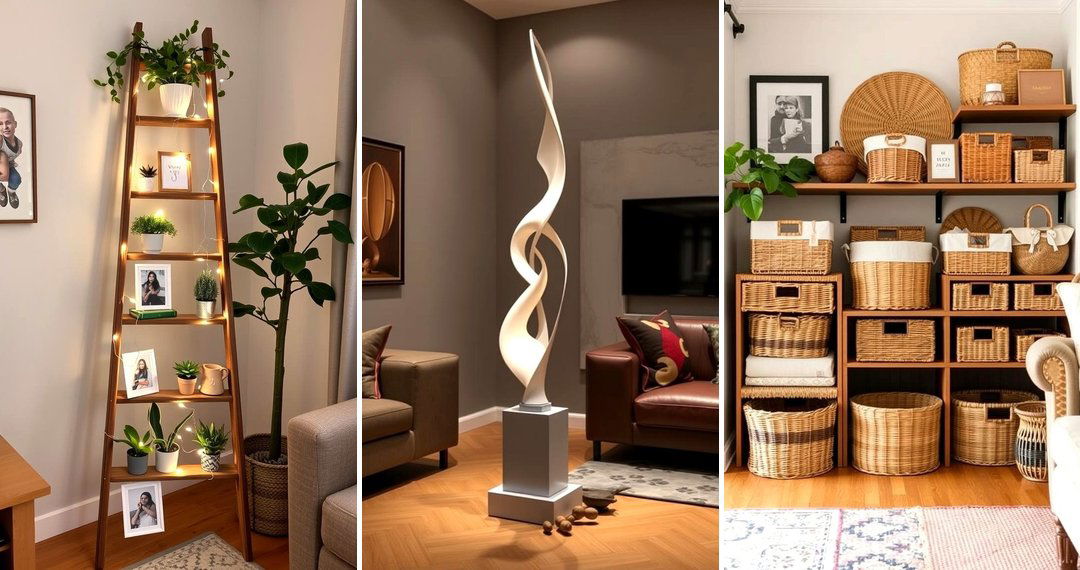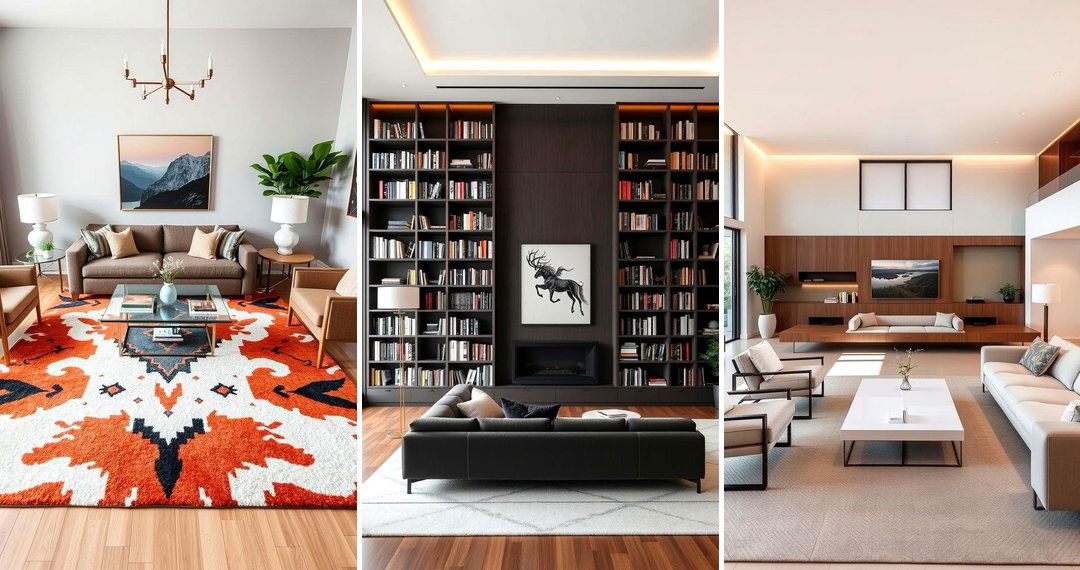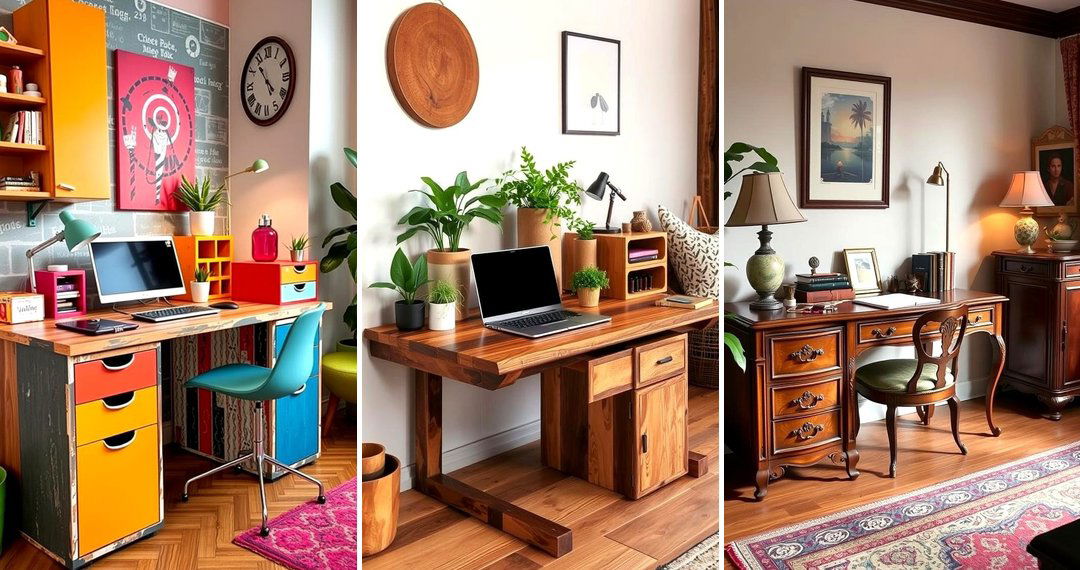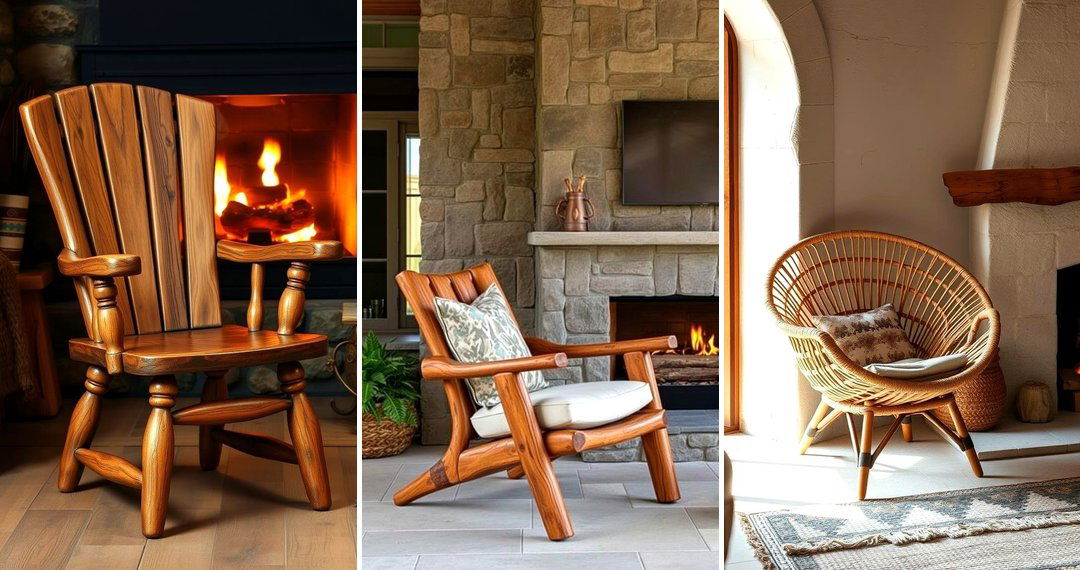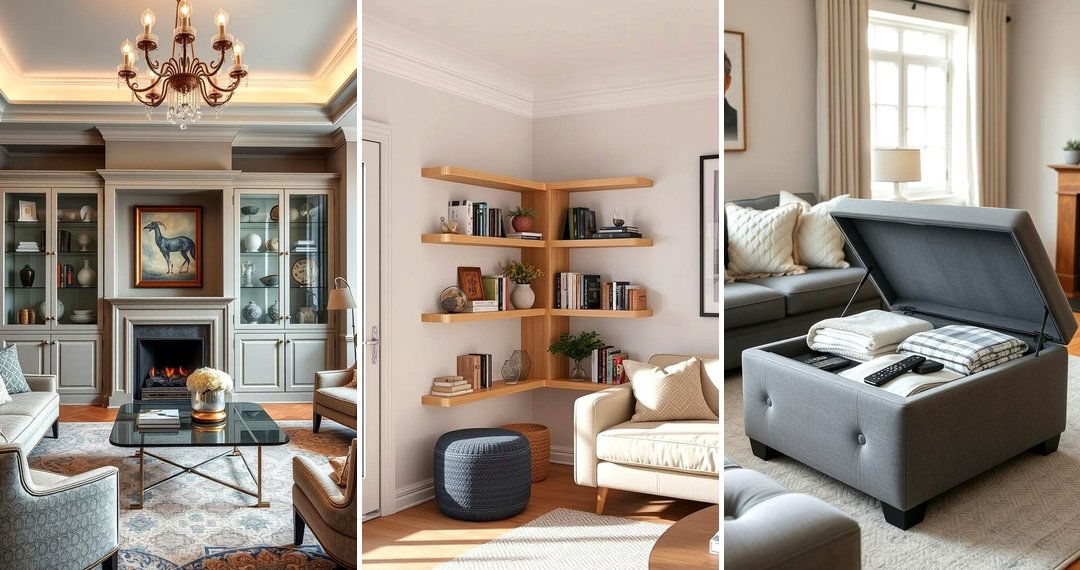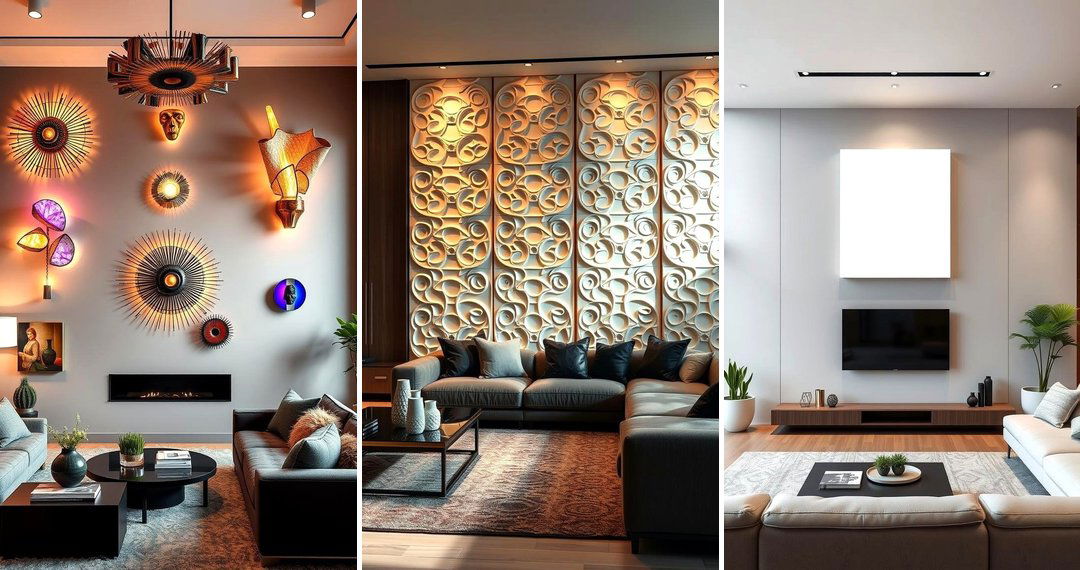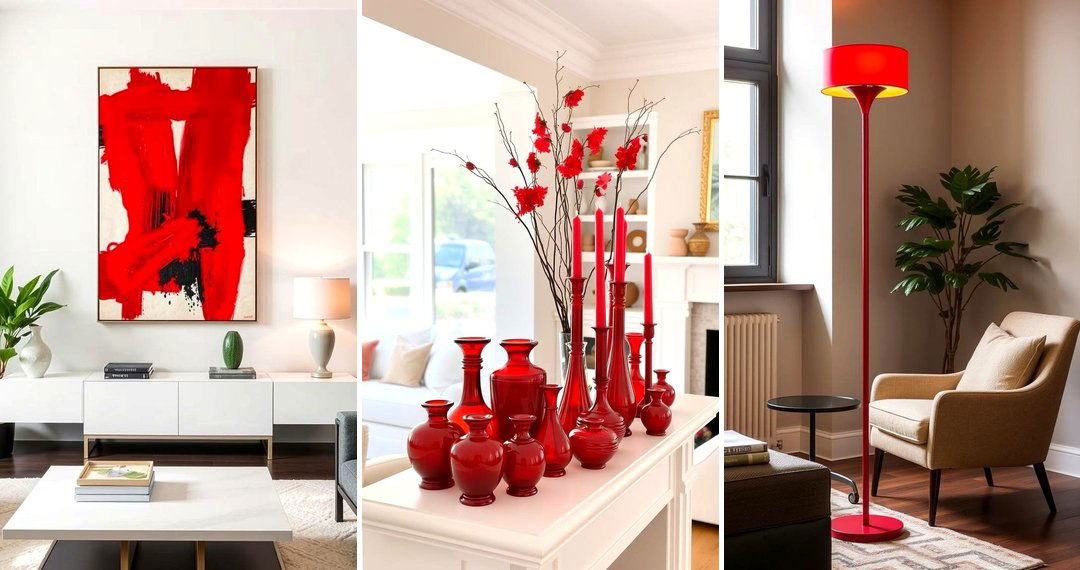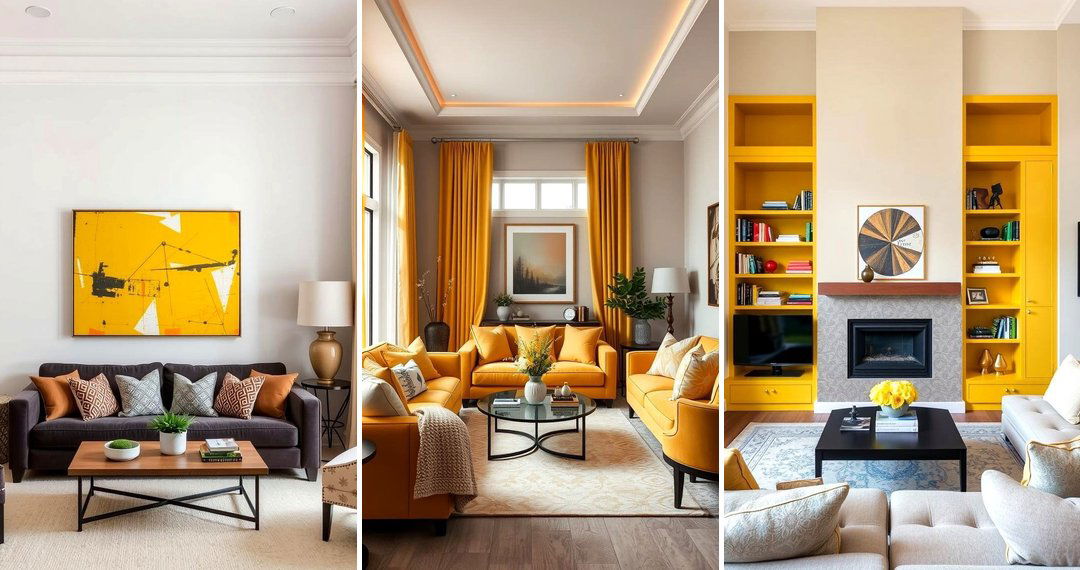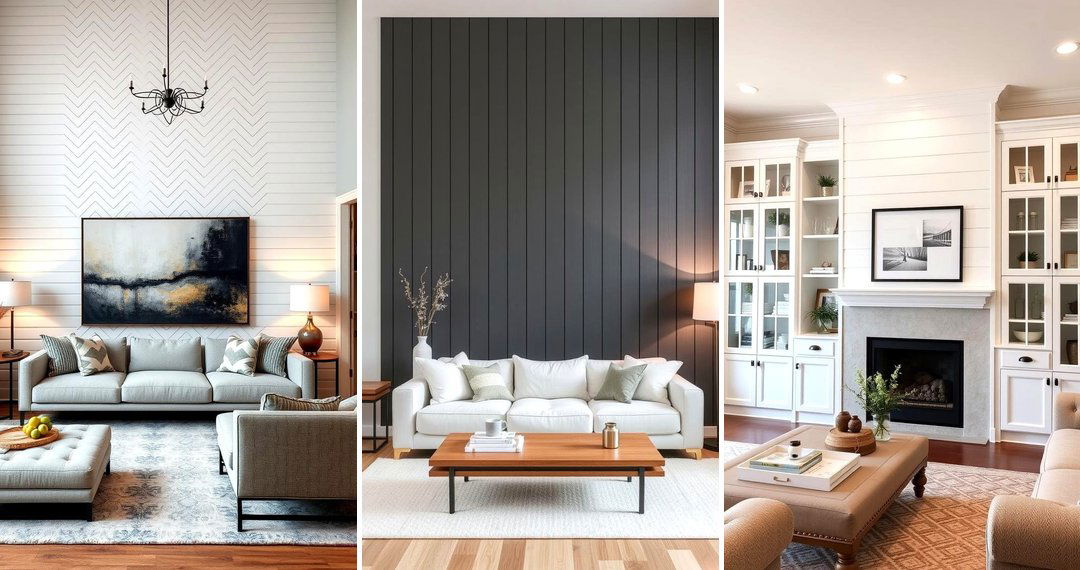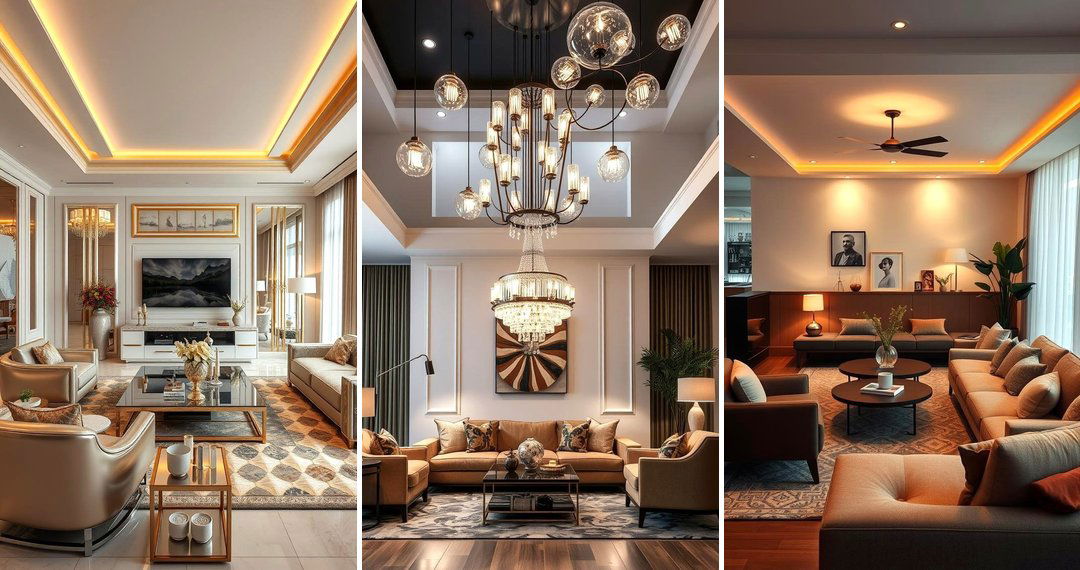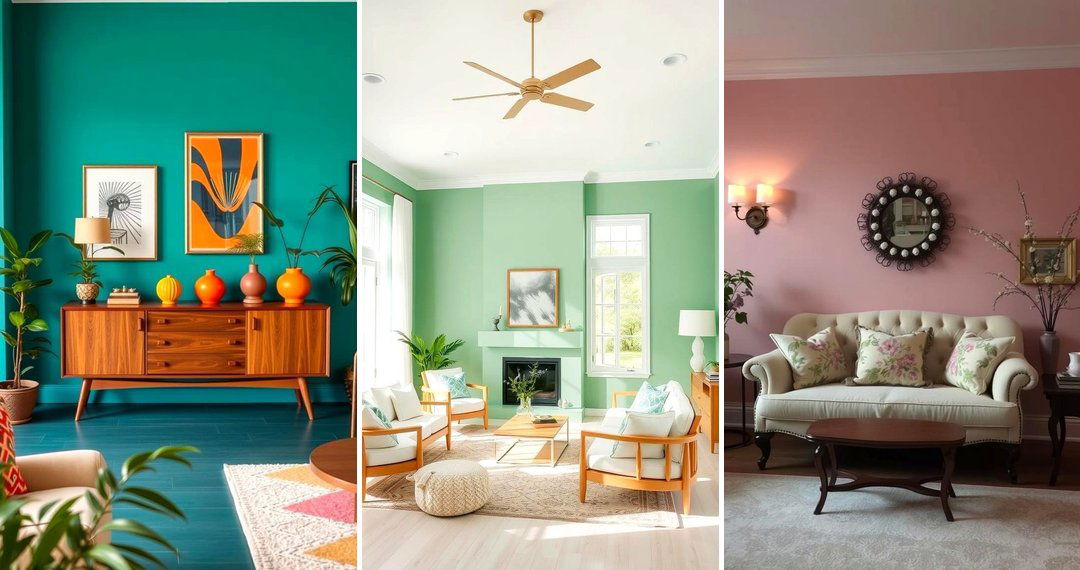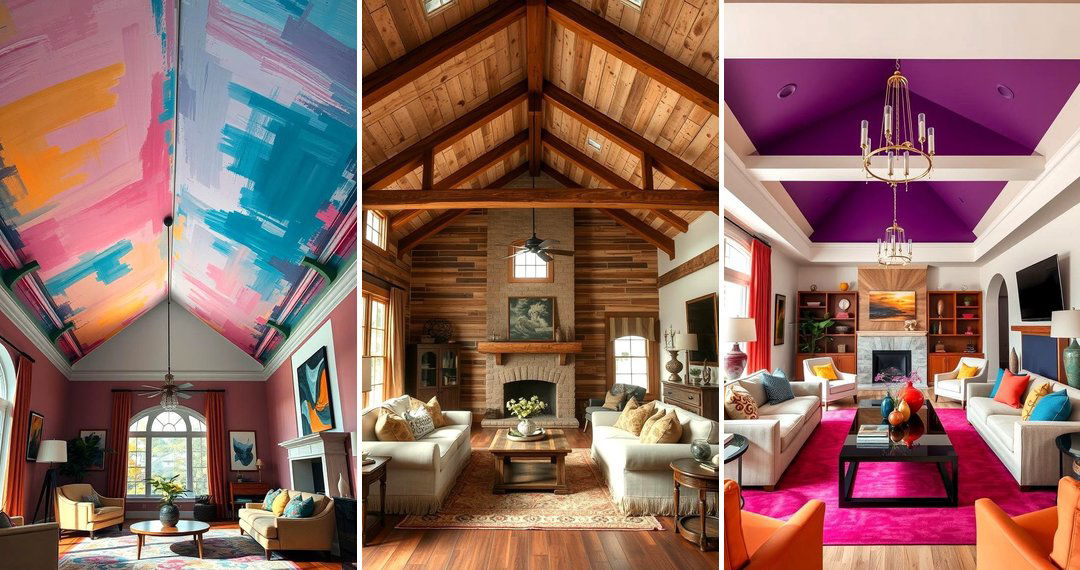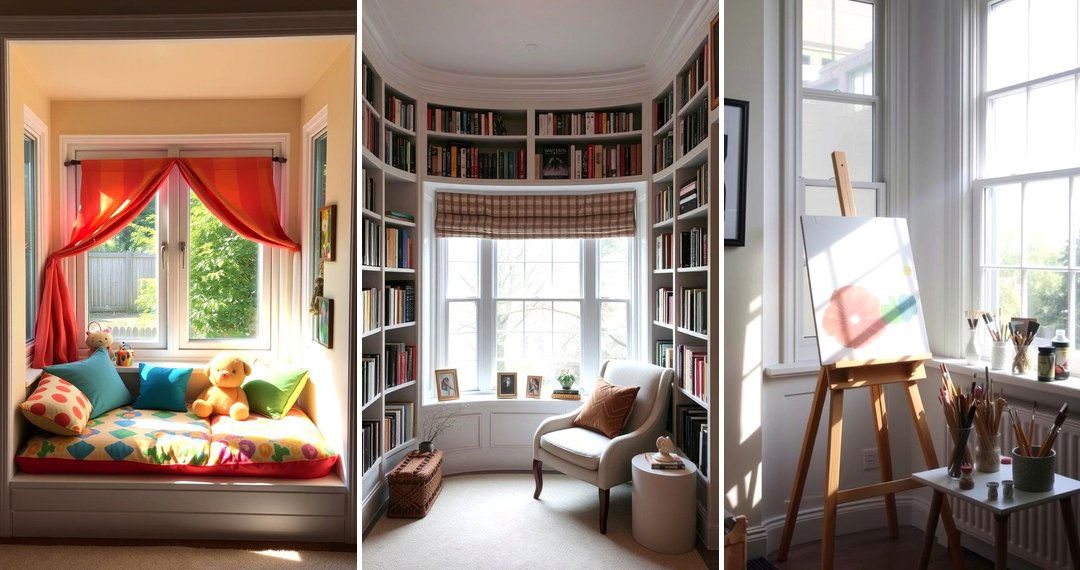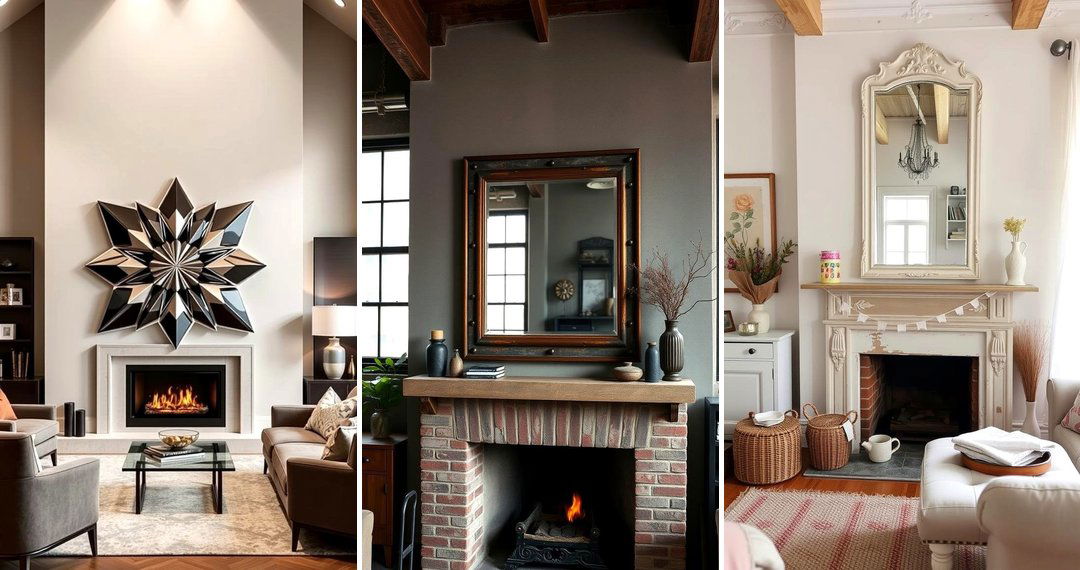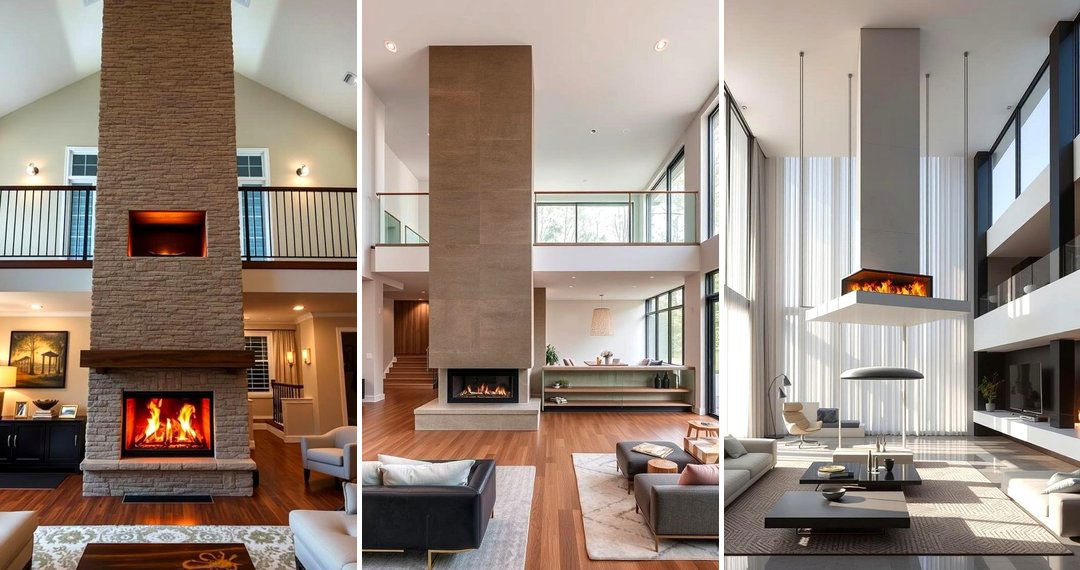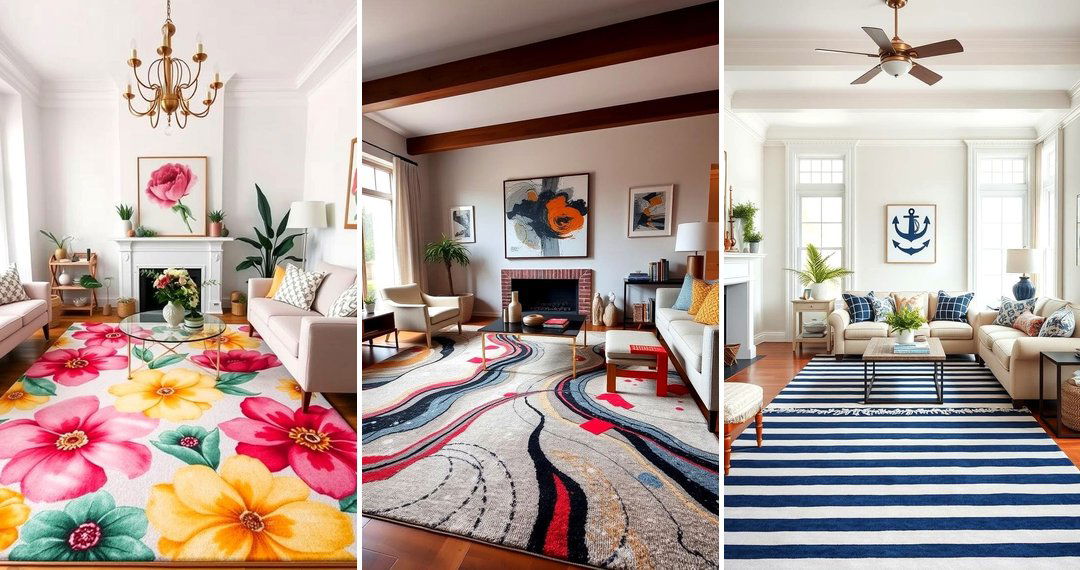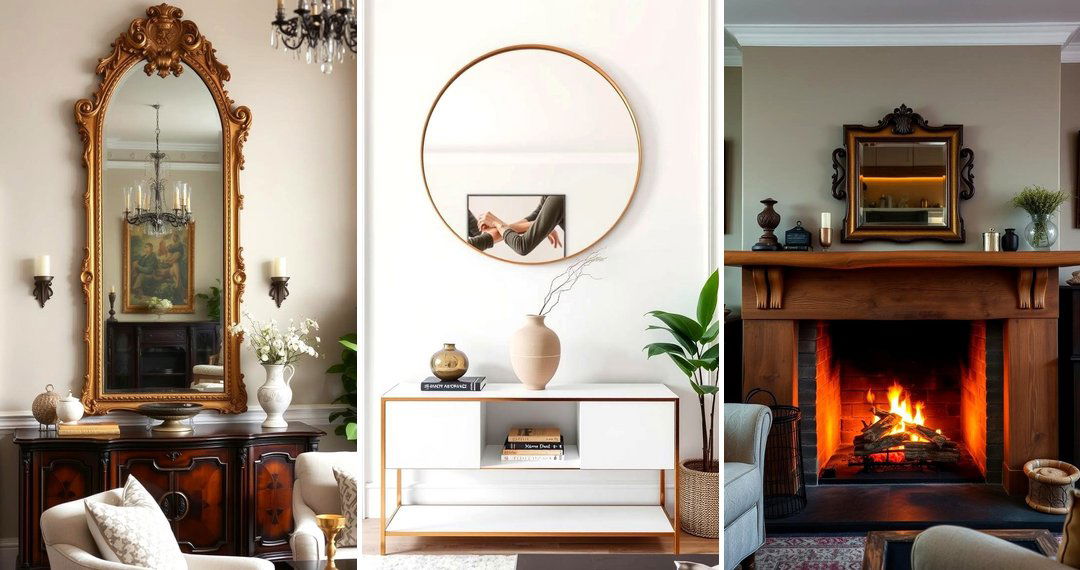Your introduction here
The living room, often the heart of a home, serves as a versatile space for relaxation, entertainment, and connection. Crafting the perfect layout for your living room is paramount to achieving both functionality and aesthetic appeal. A well-thought-out arrangement can transform a simple room into a welcoming haven that reflects your personal style and caters to your lifestyle needs. Whether you're working with a sprawling space or a cozy nook, the right design can maximize comfort and create an inviting atmosphere for family and guests alike. Exploring various approaches to arranging your furniture and decor can unlock the full potential of this essential area. Let's delve into some inspiring concepts for your next living room makeover.
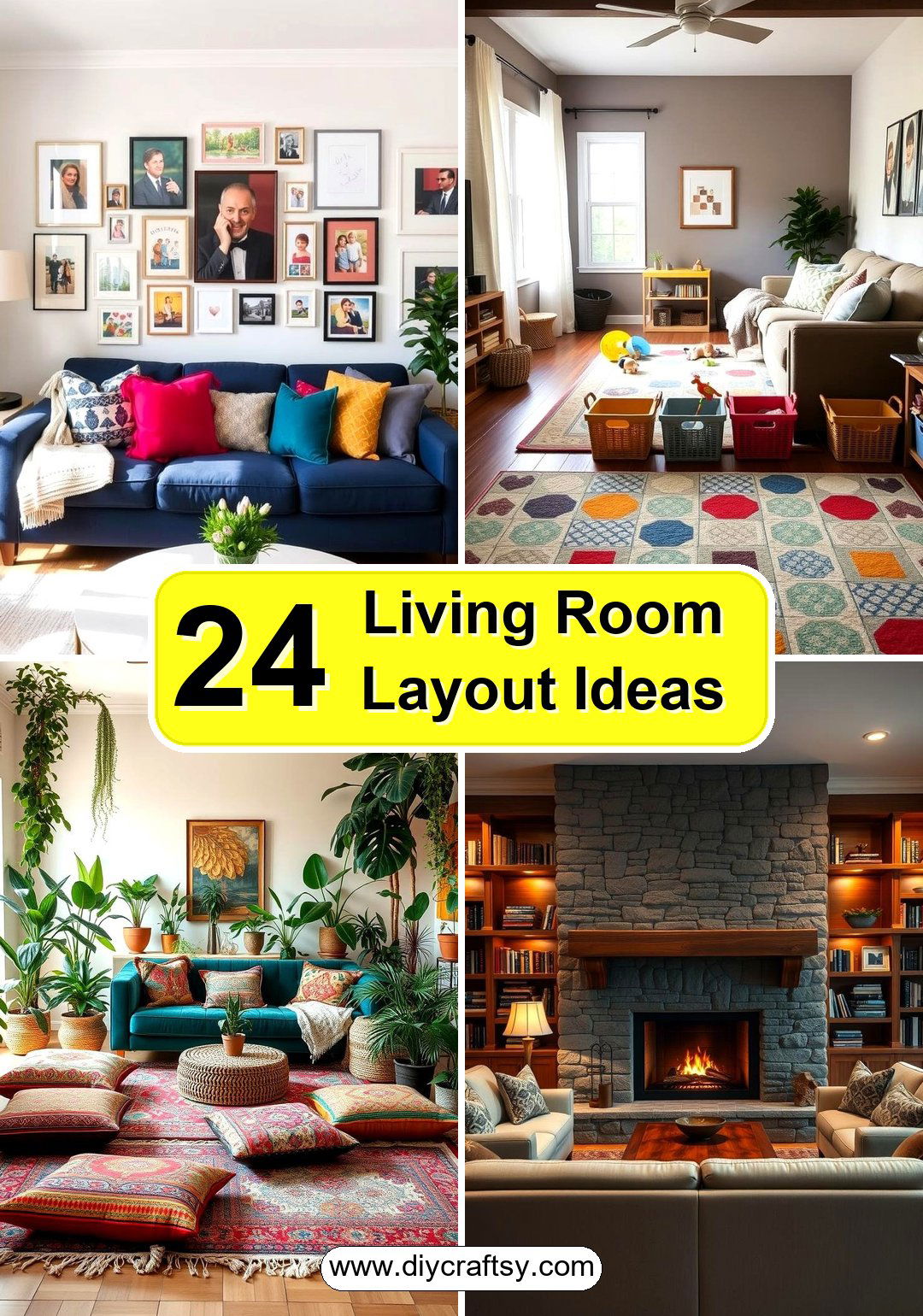
1. The Classic Focal Point Arrangement
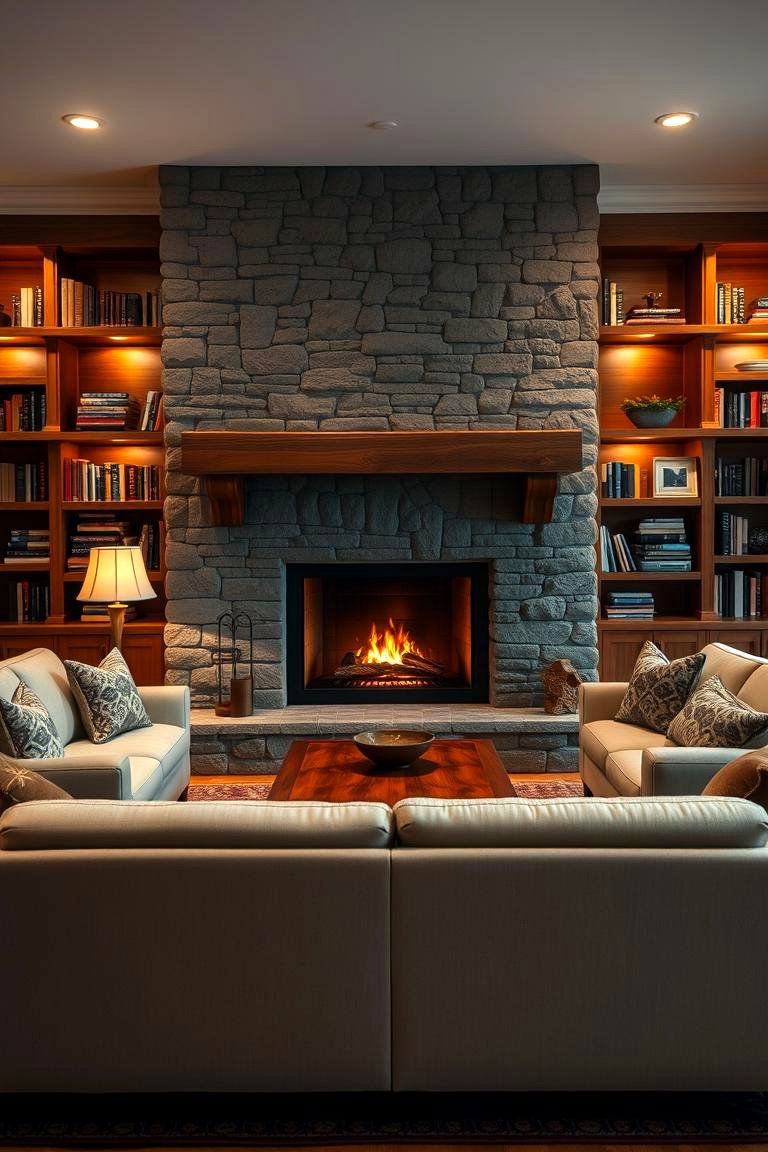
For many living rooms, a natural focal point like a fireplace or a television serves as the anchor for the layout. This arrangement typically involves placing the main seating, such as a sofa or sectional, directly facing this point of interest. This setup fosters a sense of balance and encourages interaction, as everyone in the room naturally gravitates towards the same area. Moreover, it simplifies furniture placement, making it easier to define conversation zones and create a cohesive look. Consider adding armchairs or accent chairs on either side to complete the balanced and inviting feel of this timeless layout.
2. Defining Space with a Sectional Sofa
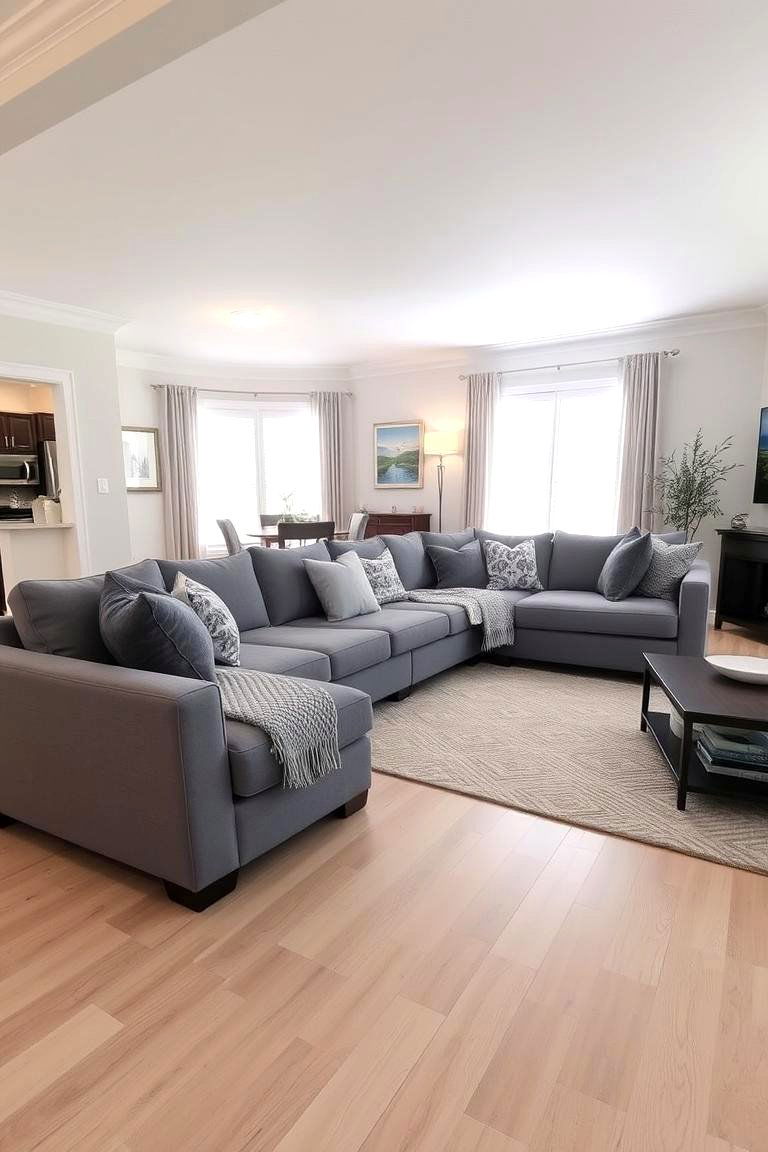
A sectional sofa can be a game-changer in defining distinct areas within a larger living room, especially in open-concept homes. Bringing a sense of enclosure and comfort, a well-placed sectional can delineate the living space from a dining area or hallway without the need for physical barriers. Furthermore, its ample seating capacity makes it ideal for families or those who frequently entertain. Think about orienting the sectional to maximize views or create a cozy corner for relaxation. With the right accessories like throw pillows and blankets, a sectional becomes both functional and stylish.
3. The Intimate Face-to-Face Seating
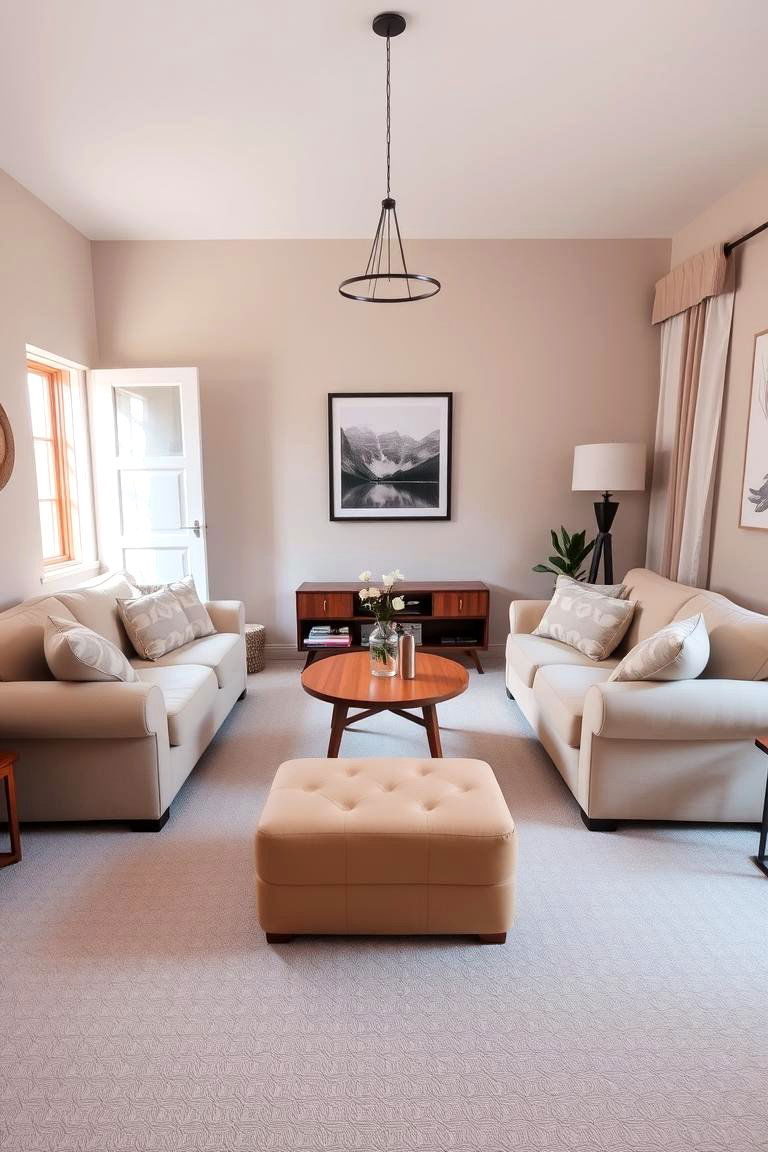
For living rooms designed primarily for conversation and connection, consider arranging two sofas directly facing each other. This layout promotes a sense of intimacy and encourages interaction among those seated. It's particularly effective in smaller to medium-sized rooms where the focus is on creating a comfortable and conversational atmosphere. Moreover, this symmetrical arrangement often lends a touch of elegance and formality to the space. A coffee table placed between the sofas serves as a central point for drinks and decor, enhancing both functionality and visual appeal.
4. Balancing Comfort with an L-Shaped Sofa and Armchair
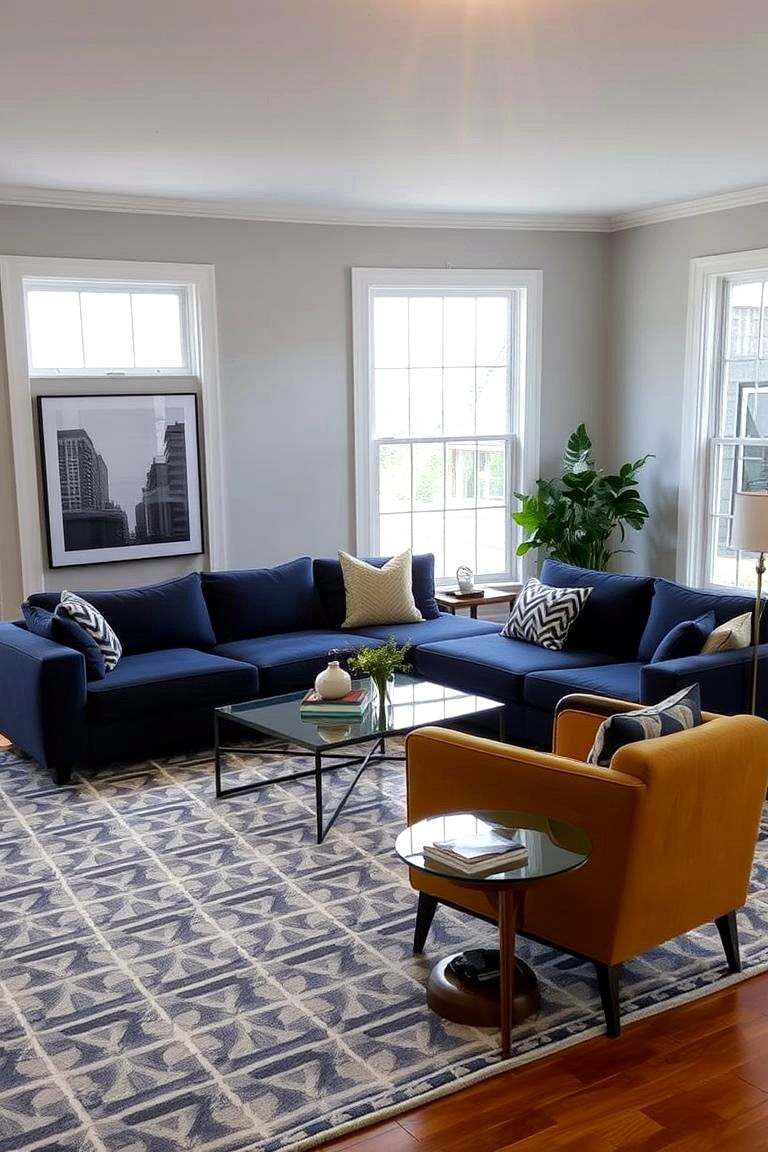
An L-shaped sofa paired with a comfortable armchair offers a versatile and balanced living room layout. This combination provides ample seating while maintaining an open and airy feel. The L-shaped sofa can define a primary seating area, while the armchair can be angled to facilitate conversation or offer a cozy reading spot. Additionally, this arrangement allows for flexibility in furniture placement and can easily adapt to various room shapes and sizes. Consider using a rug to anchor the seating arrangement and a coffee table to tie the elements together for a harmonious look.
5. Creating a Conversational Circle
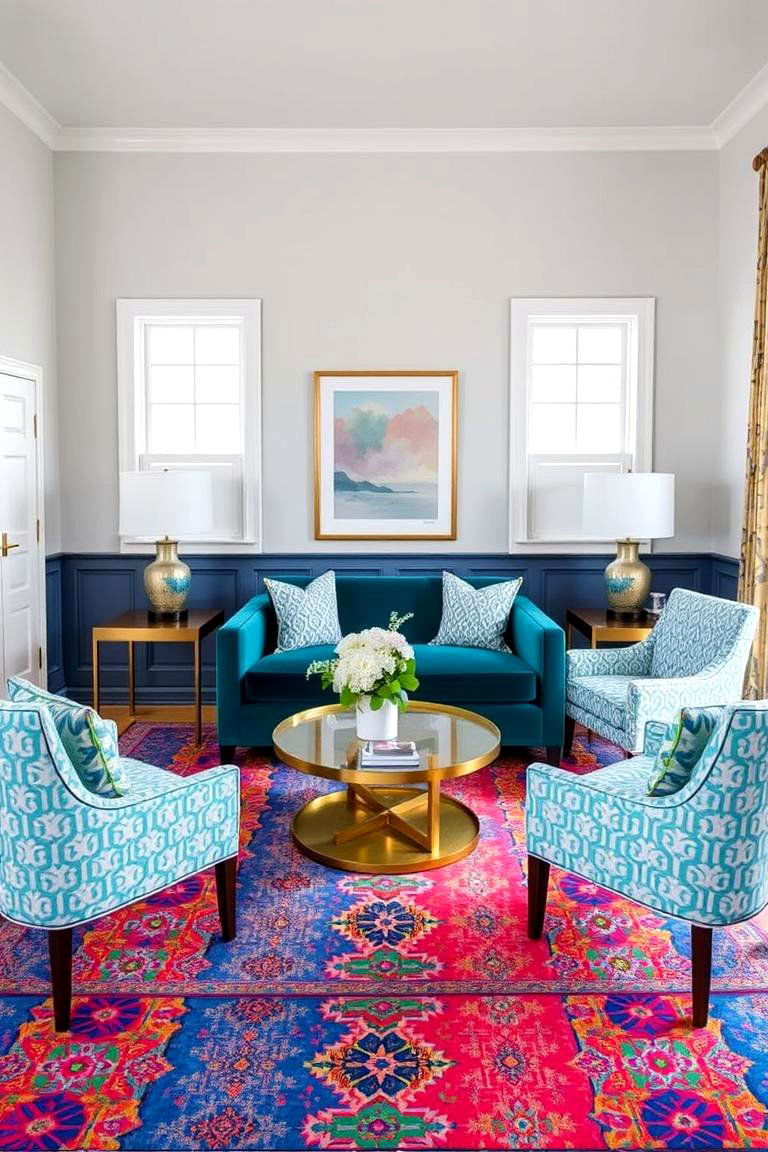
What if you aimed for a layout that truly prioritized interaction? A circular seating arrangement, using a mix of sofas, armchairs, and ottomans around a central coffee table, fosters an inclusive and engaging atmosphere. This design encourages easy conversation flow and creates a welcoming environment for gatherings. While it might require a bit more space, the benefits in terms of social interaction are significant. Think about using a round rug to further emphasize the circular arrangement and create a cohesive and inviting space for everyone to connect.
6. The Cozy Living Room with a Reading Nook
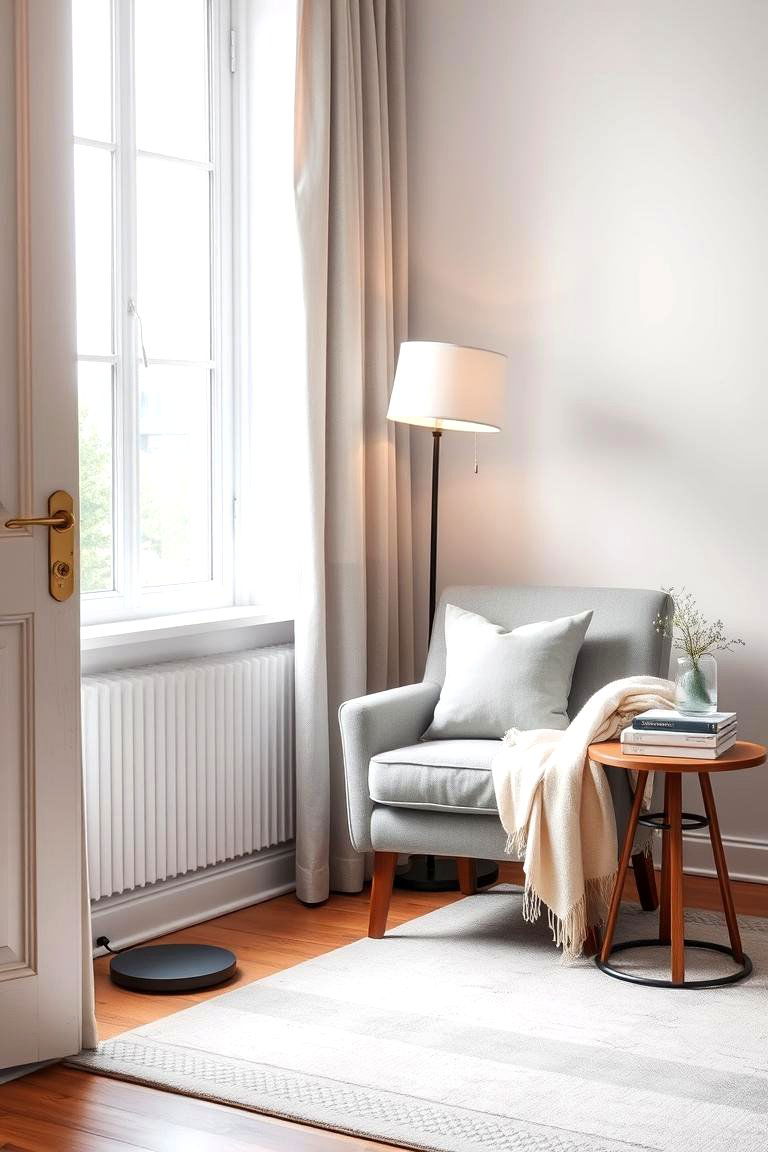
For book lovers and those seeking a quiet retreat within their living space, incorporating a dedicated reading nook can be a wonderful idea. This adds a layer of functionality and creates a cozy corner for relaxation and escape. Position a comfortable armchair or a small loveseat near a window for natural light, and add a side table and a floor lamp for evening reading. Consider using a bookshelf or a room divider to subtly define the reading area and create a sense of separation within the larger living room.
7. Seamless Flow in an Open-Concept Living Room
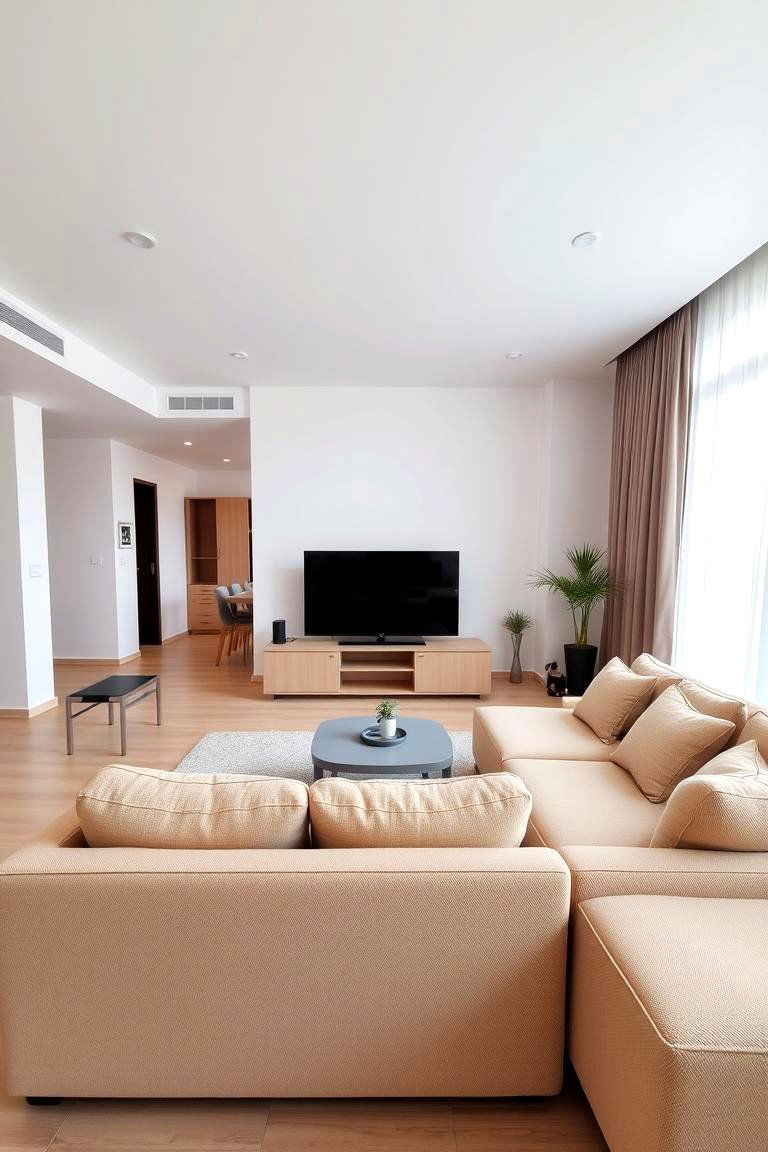
In modern open-concept homes, the living room often flows seamlessly into other areas like the dining room or kitchen. The key benefit here is creating a sense of spaciousness and connectivity. Define the living area using a large rug, strategically placed furniture, and perhaps even a change in flooring or wall color. Consider the sightlines and traffic flow to ensure a harmonious transition between the different zones. Furniture arrangements that allow for interaction between the living area and adjacent spaces can enhance the overall functionality of the open plan.
8. Maximizing Space in a Small Living Room
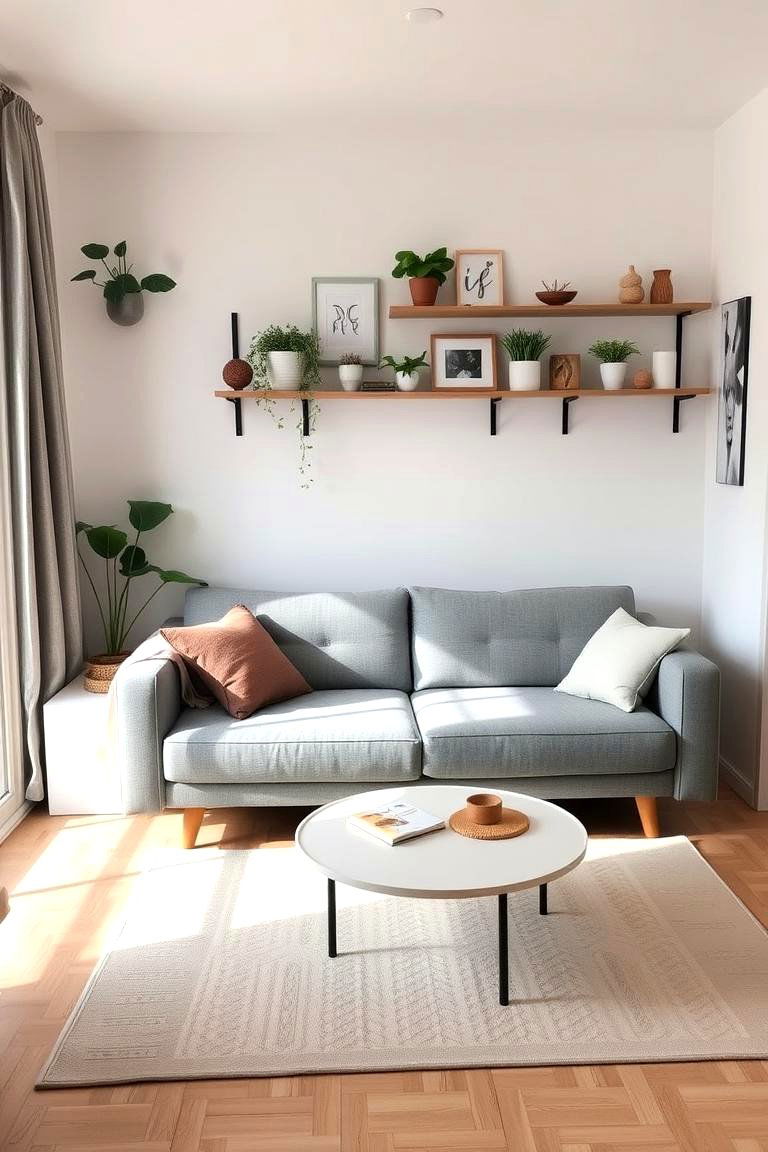
Small living rooms require thoughtful planning to maximize every inch of available space. The focus should be on functionality and avoiding clutter. Opt for multi-purpose furniture, such as a sofa bed or ottomans with storage. Wall-mounted shelves and vertical storage solutions can help keep the floor space clear. Consider a layout that keeps pathways open and allows natural light to flow freely. Even in a compact space, a well-arranged living room can feel comfortable and inviting.
9. Integrating a Home Office into the Living Room
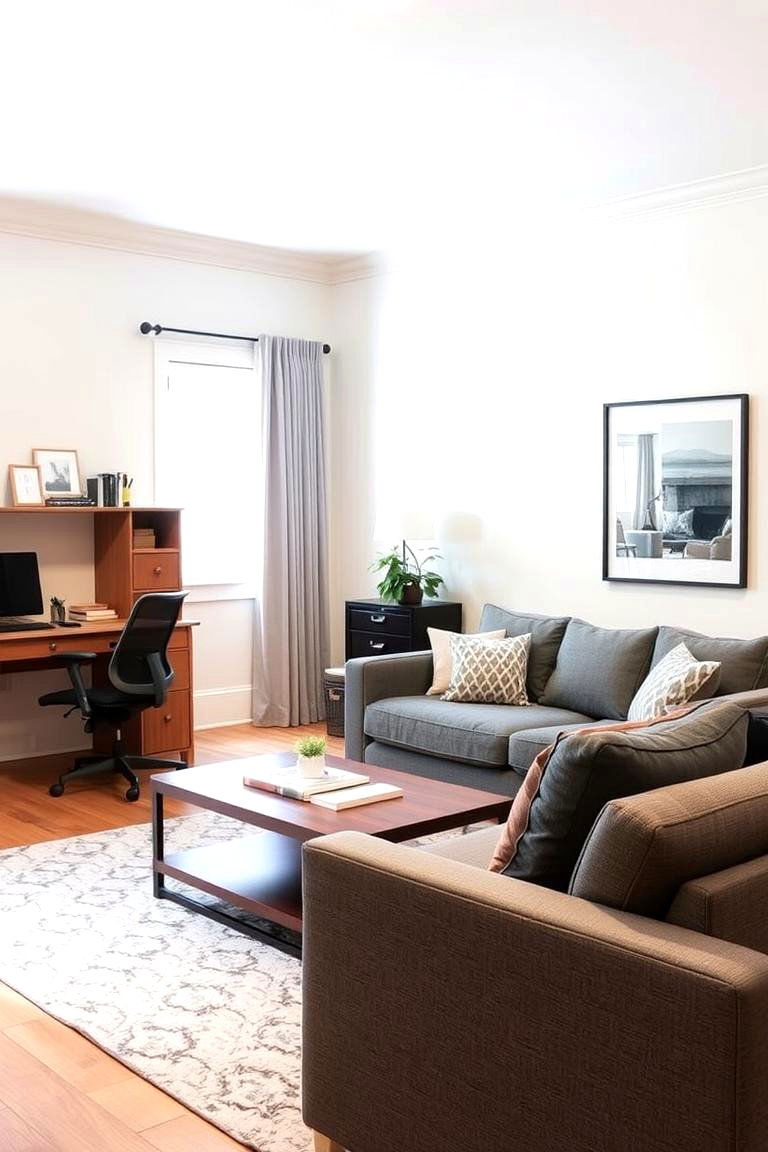
With the rise of remote work, many are looking to integrate a functional home office area into their living space. This offers convenience and allows for a seamless blend of work and relaxation. Designate a corner or a section of the living room for a desk and comfortable chair. Consider using a screen or a bookshelf to create a visual separation between the work and leisure zones. Ensure adequate lighting for both tasks and maintain a clutter-free workspace to promote productivity within the living environment.
10. Creating a Playful Zone for Kids in the Living Room
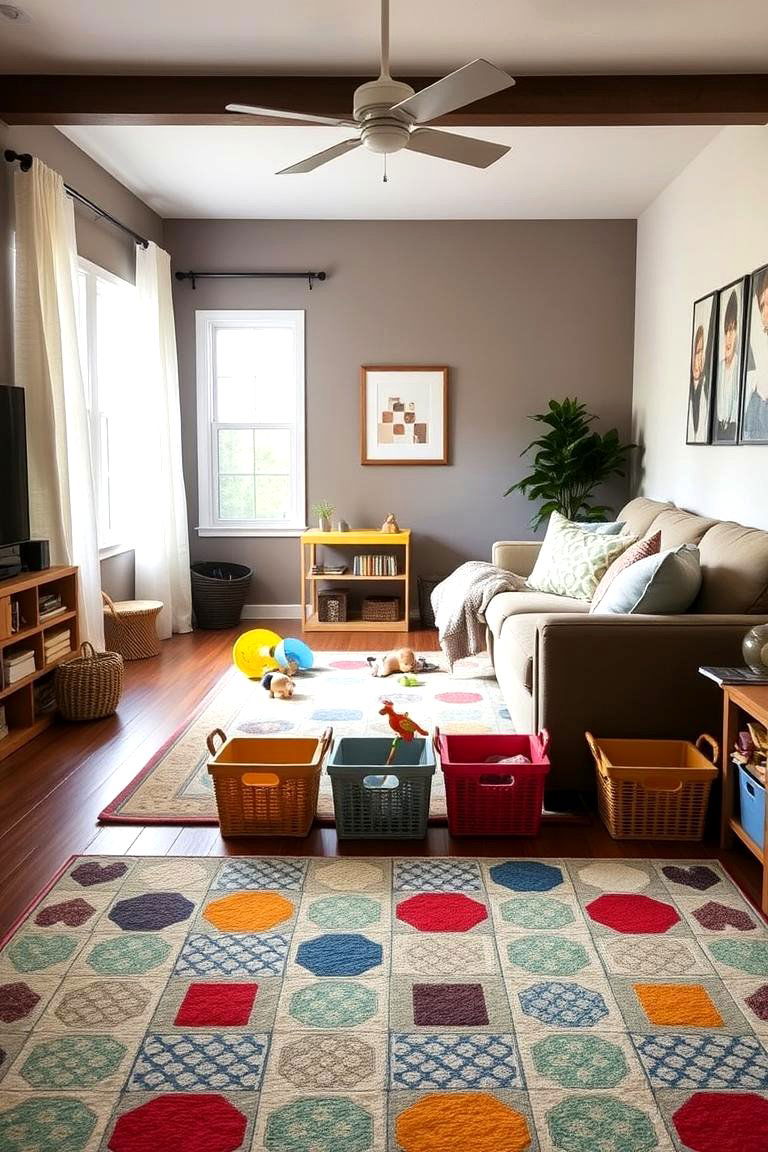
For families with young children, incorporating a designated play area within the living room can be a practical solution. This allows kids to have their own space while still being within sight and supervision. Define the play area with a colorful rug or playmat and include storage solutions for toys. Consider flexible furniture that can be easily moved or reconfigured. The goal is to create a fun and safe space for children without compromising the overall aesthetic and functionality of the living room.
11. The Elegance of a Formal Living Room Layout
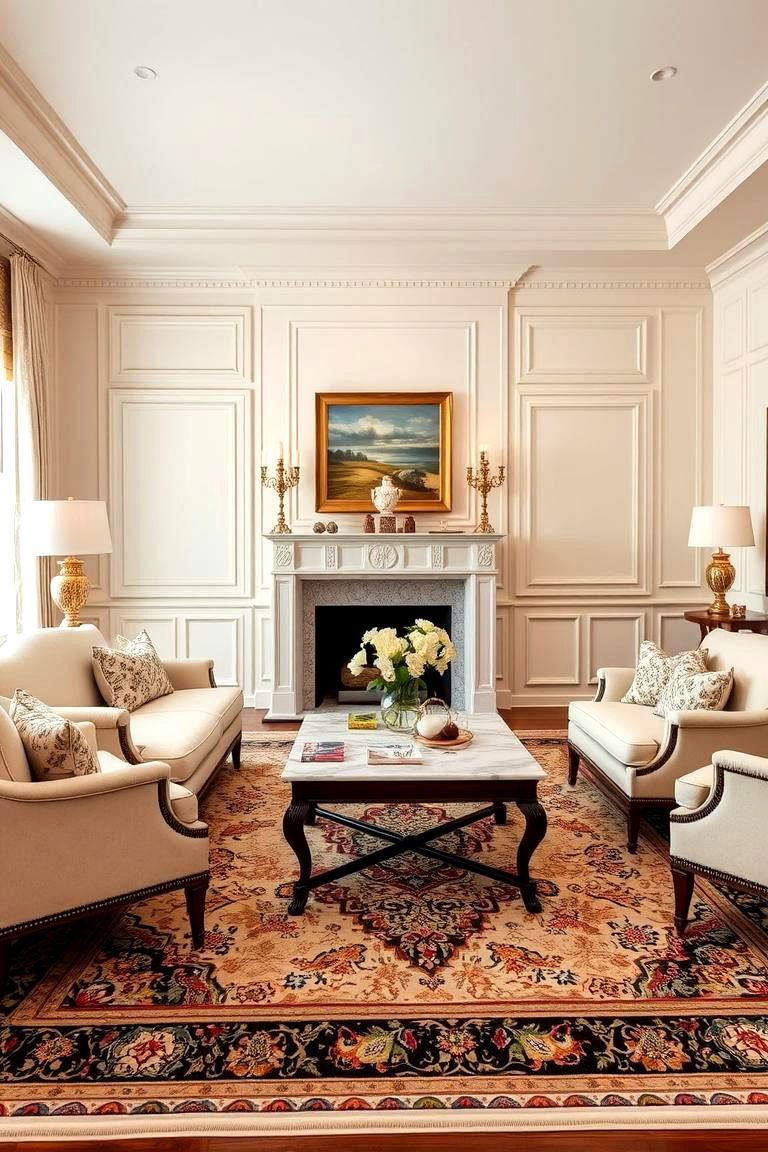
Unlike more casual living spaces, a formal living room often prioritizes aesthetics and structured arrangements. This layout typically features symmetrical furniture placement and a focus on creating a sophisticated and elegant atmosphere. Consider using high-quality materials and classic furniture pieces. The arrangement might include a sofa, armchairs, and a coffee table, all carefully positioned to create a sense of balance and refinement. Formal living rooms are often reserved for entertaining guests and may not be used for everyday relaxation.
12. Embracing Comfort in a Casual Living Room Layout
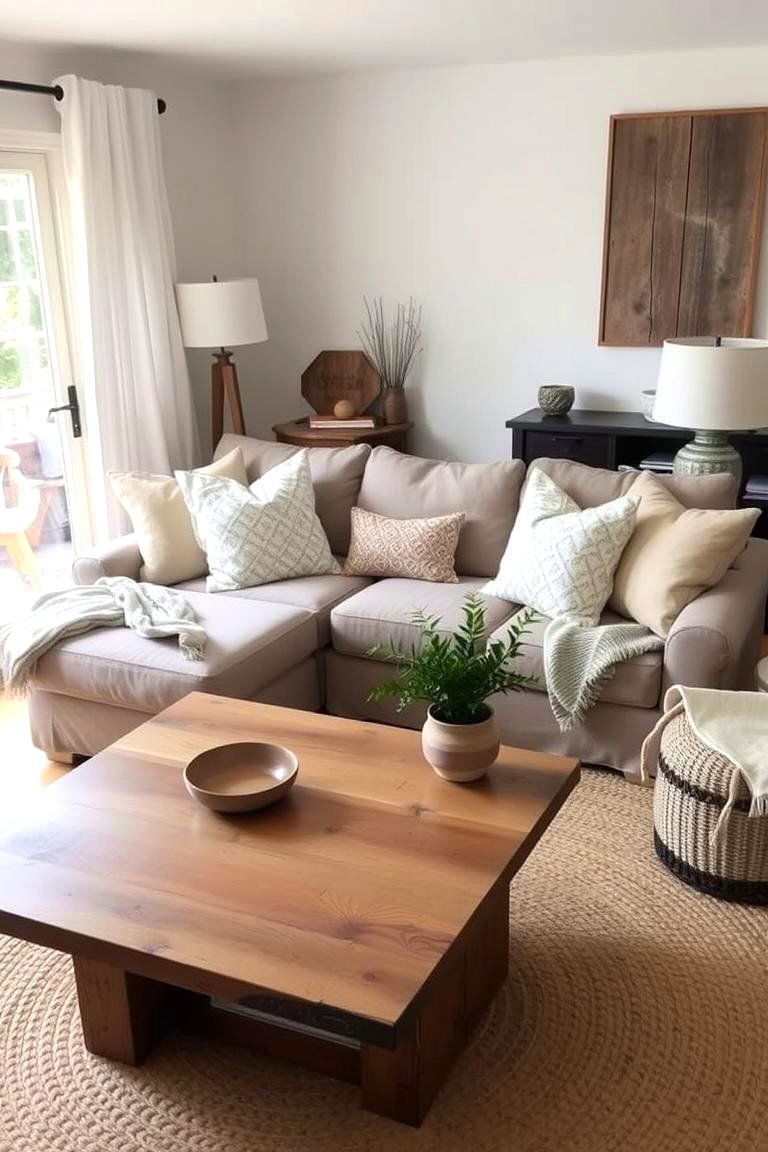
For a living room that encourages relaxation and everyday use, a casual layout is ideal. The emphasis here is on comfort and creating a laid-back atmosphere. Opt for comfortable, durable furniture and arrange it in a way that promotes easy conversation and relaxation. Think about incorporating soft throws, plush pillows, and perhaps even a comfortable floor cushion or two. The goal is to create a welcoming and unpretentious space where everyone feels at ease.
13. Framing a Stunning View as the Focal Point
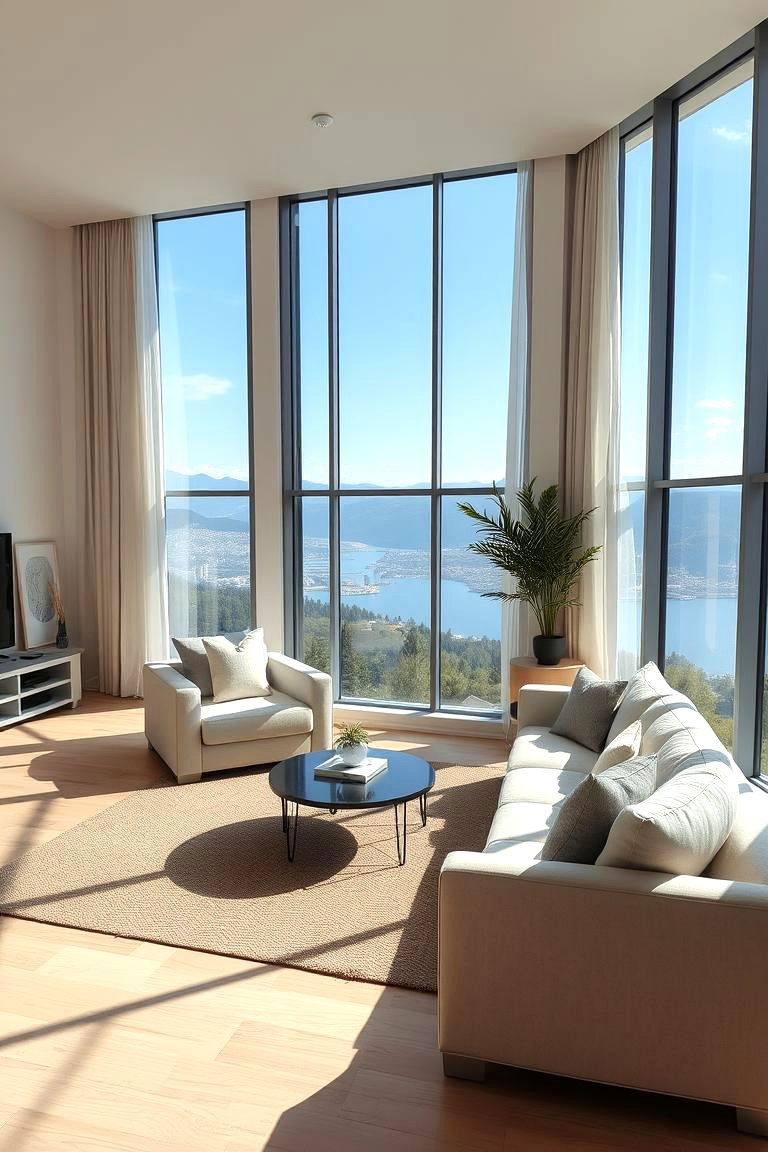
If your living room boasts a breathtaking view, make it the star of the show. Arrange your furniture to maximize the visual connection to the outdoors. Position sofas and chairs to face the windows, allowing natural light and the scenery to become the focal point. Keep window treatments minimal to avoid obstructing the view. This layout not only enhances the beauty of the room but also creates a sense of openness and connection with nature.
14. Personalizing with a Gallery Wall as the Centerpiece
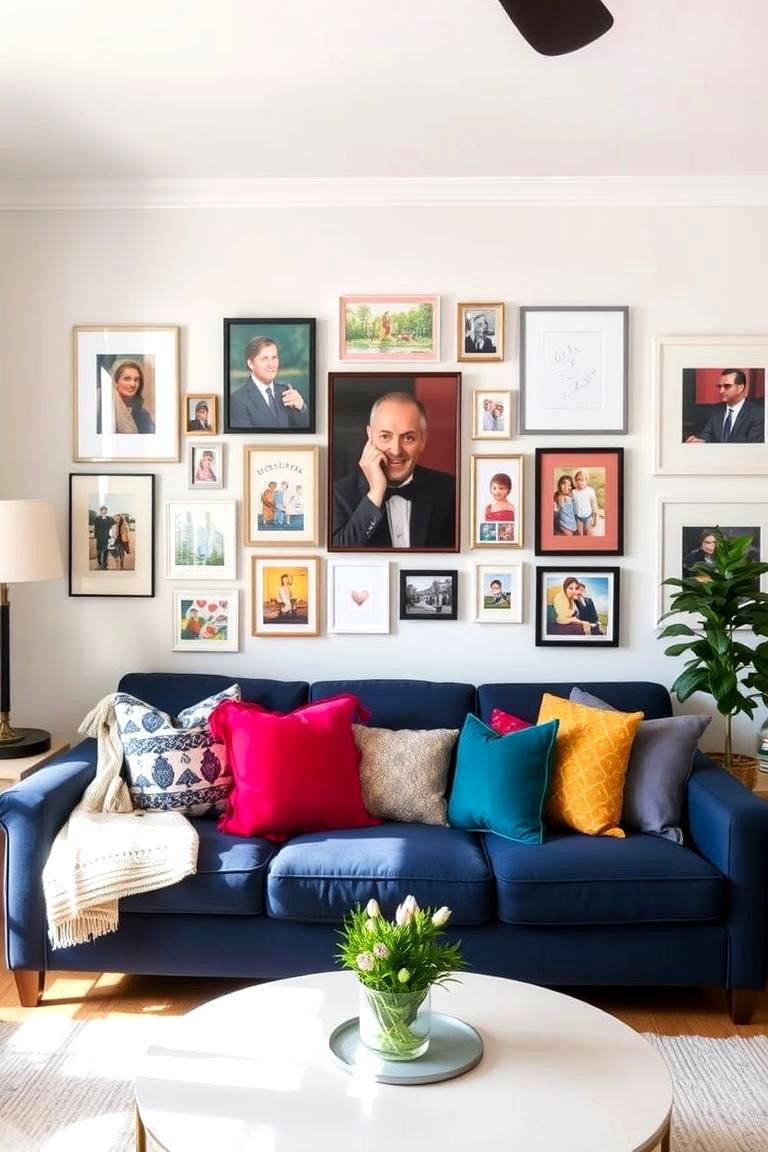
For art enthusiasts, a gallery wall can serve as a unique and personalized focal point in the living room. This allows you to showcase your personality and interests through a curated collection of artwork, photographs, or other decorative items. Arrange your seating to complement the gallery wall, ensuring comfortable viewing angles. The gallery wall itself becomes a conversation starter and adds a touch of individuality to the space, making it truly your own.
15. Anchoring the Space with a Large Area Rug

A large area rug can be instrumental in defining the living room space and anchoring the furniture arrangement. It helps to visually group the seating area and creates a sense of cohesion. Choose a rug that is large enough to extend at least under the front legs of all major furniture pieces. The rug can also introduce color, texture, and pattern to the room, enhancing its overall aesthetic appeal and creating a warm and inviting foundation for the layout.
16. The Simplicity of a Minimalist Living Room Layout
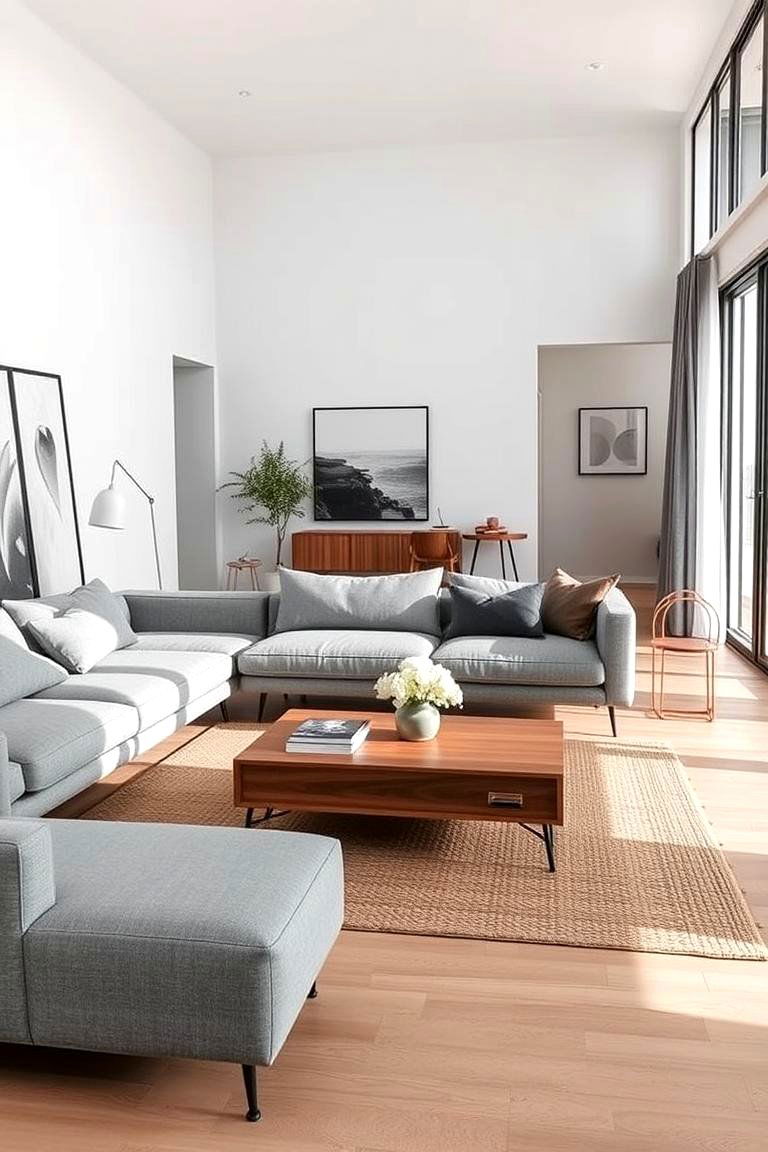
For those who prefer a clean and uncluttered aesthetic, a minimalist living room layout is the perfect choice. The focus here is on essential furniture pieces and a sense of spaciousness. Opt for simple, functional furniture with clean lines and neutral colors. Avoid excessive decor and keep surfaces clear. This layout promotes a sense of calm and tranquility, allowing the architectural elements of the room to shine through.
17. Injecting Personality with a Bohemian Living Room Layout
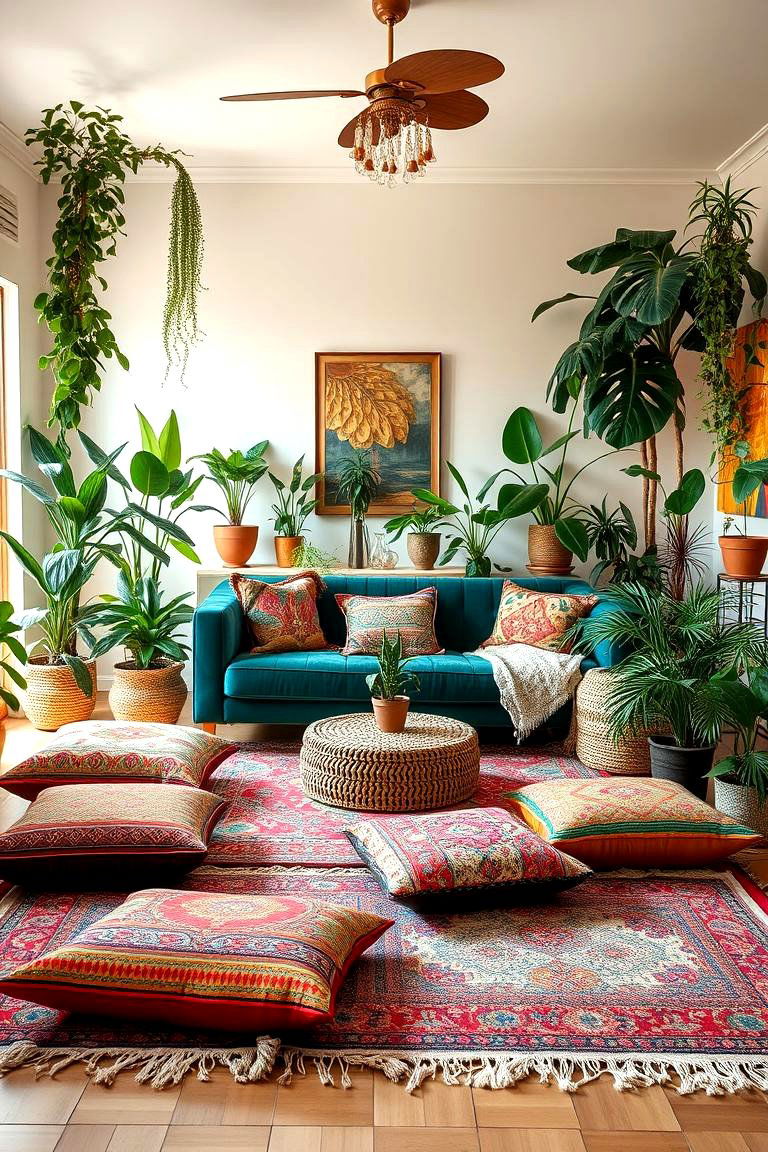
A bohemian living room layout is all about expressing individuality and embracing a relaxed, eclectic style. This design encourages a mix of textures, patterns, and colors, creating a vibrant and unique space. Incorporate comfortable floor cushions, layered rugs, and an array of decorative pillows. Don't be afraid to mix vintage and modern pieces, and add plenty of plants to bring life and energy to the room. The bohemian style is about creating a comfortable and inspiring space that reflects your personal journey.
18. Sleek Lines in a Modern Living Room Layout
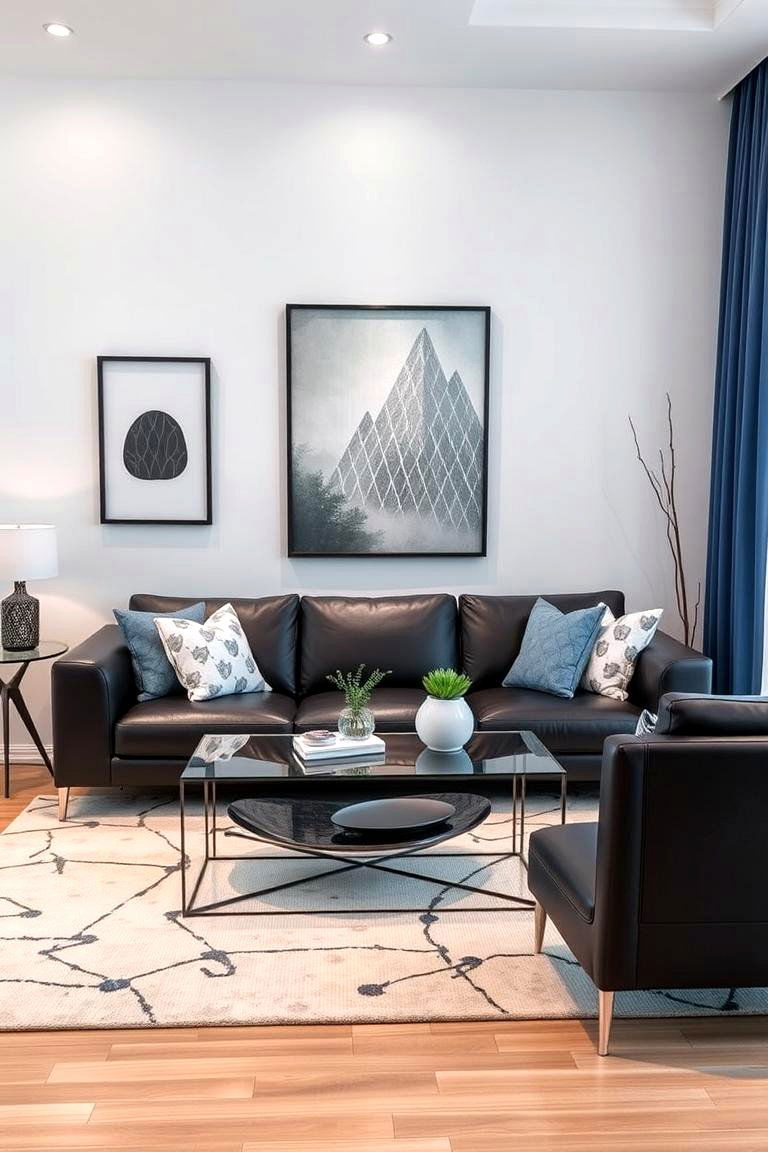
Modern living room layouts typically feature clean lines, geometric shapes, and a sophisticated aesthetic. The emphasis is on functionality and a streamlined look. Opt for furniture with low profiles and sleek materials like leather, metal, and glass. A neutral color palette with pops of accent colors is common in modern designs. The goal is to create a stylish and uncluttered space that feels both contemporary and inviting.
19. Timeless Appeal of a Traditional Living Room Layout
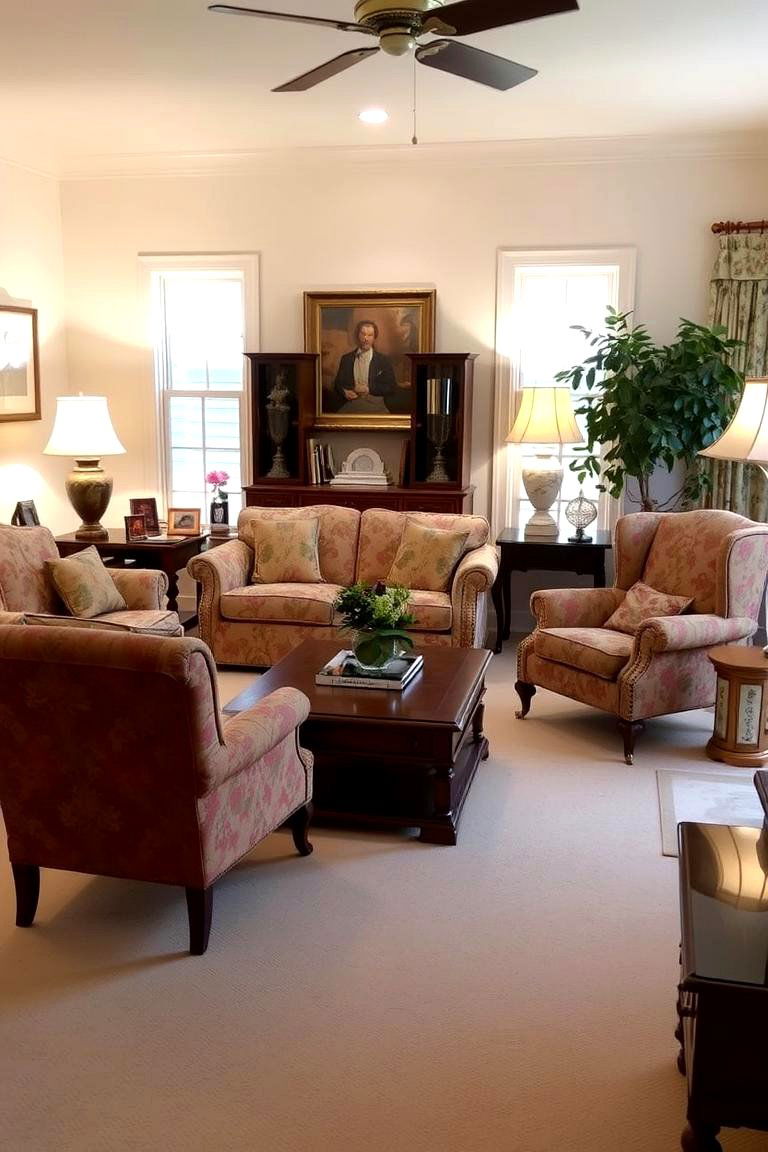
Traditional living room layouts often evoke a sense of warmth, comfort, and familiarity. This style typically features classic furniture shapes, rich wood tones, and elegant fabrics. Symmetrical arrangements and a focus on balance are key elements. Consider incorporating traditional patterns like florals or stripes and adding decorative accents like lamps, artwork, and coffee table books to create a timeless and inviting space.
20. The Harmonious Blend of an Eclectic Living Room Layout
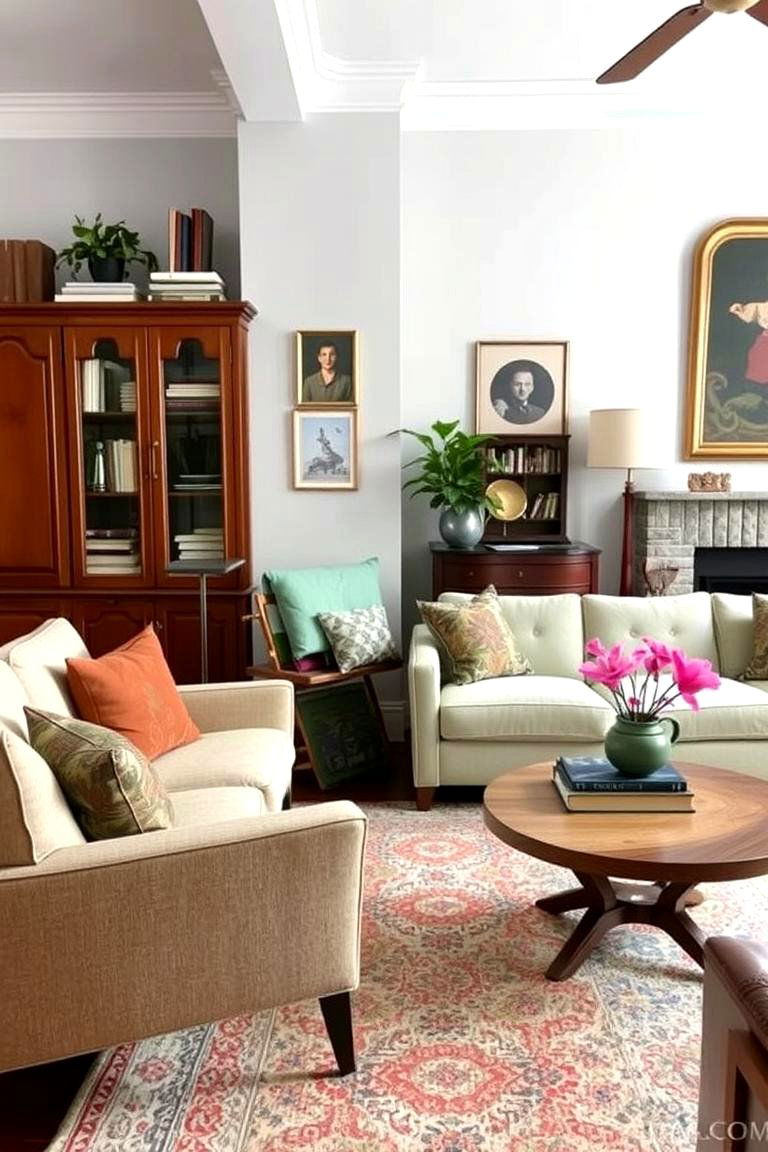
An eclectic living room layout is a celebration of diverse styles and influences. This design involves thoughtfully mixing and matching furniture, decor, and artwork from different periods and aesthetics. The key is to create a harmonious and cohesive look despite the variety. Experiment with different textures, patterns, and colors, but ensure there is a unifying element that ties everything together. An eclectic living room reflects a well-traveled and curated personal style.
21. Centering Around a Stylish Coffee Table
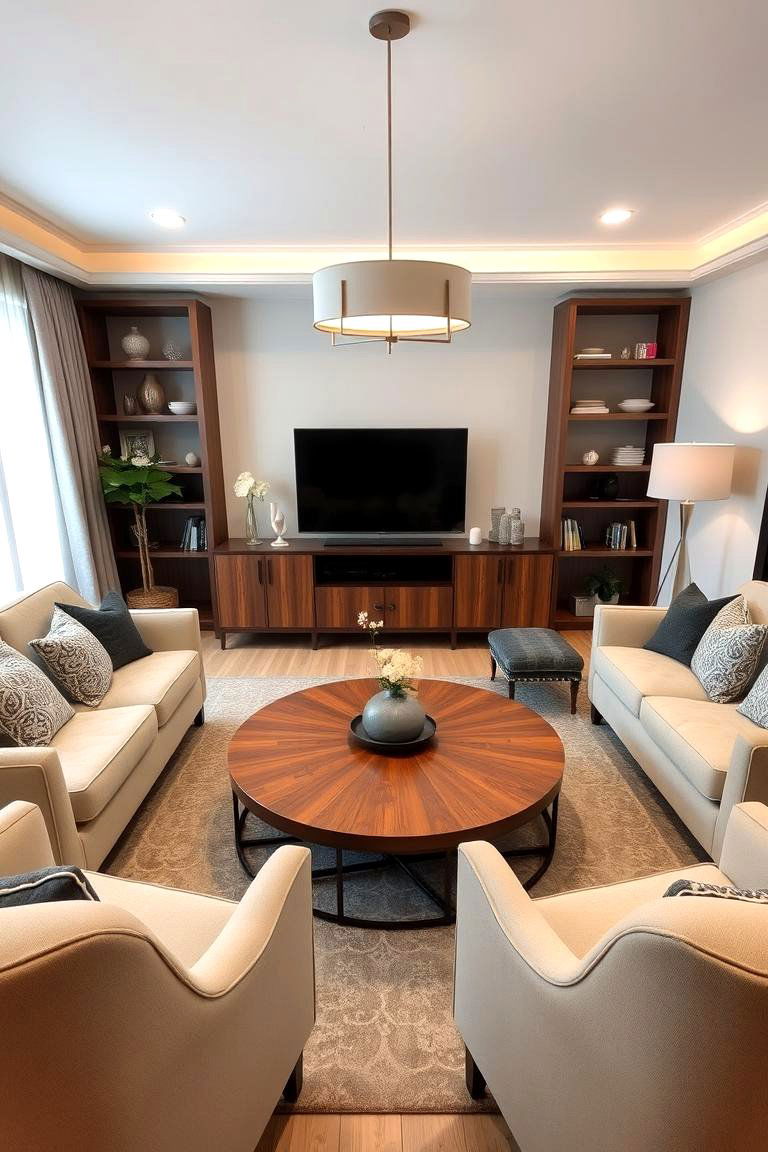
Sometimes, the coffee table can become the central focus around which the entire living room layout revolves. This piece not only serves a practical purpose but can also be a statement element that defines the style of the room. Arrange your sofas and chairs to create a comfortable and functional space around the coffee table. Consider its shape, size, and material to ensure it complements the rest of the furniture and enhances the overall aesthetic of the living room.
22. Opting for Versatile Ottomans Instead of a Coffee Table
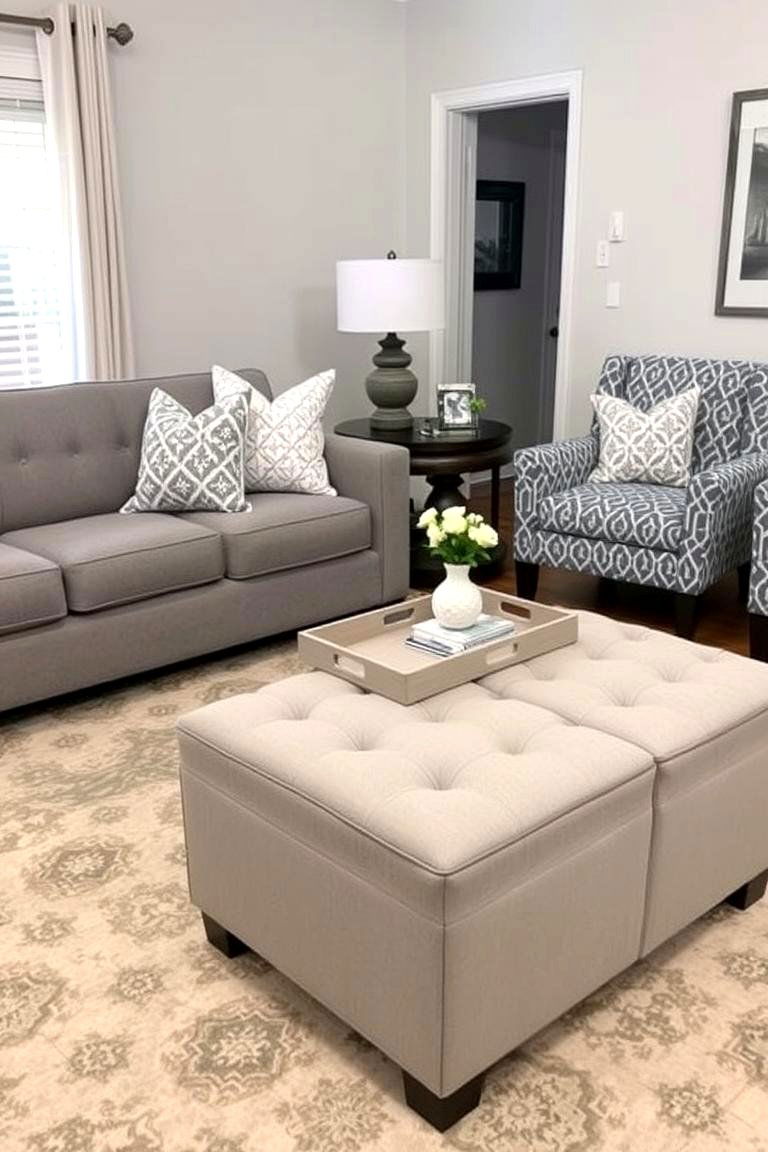
For a more flexible and multi-functional living room, consider using ottomans instead of a traditional coffee table. Ottomans can serve as footrests, extra seating, or even a makeshift coffee table when topped with a tray. This arrangement is particularly useful in smaller spaces or in rooms where versatility is key. Choose ottomans in a fabric and style that complement your sofas and chairs to create a comfortable and adaptable living area.
23. Adding Function with a Console Table Behind the Sofa

A console table placed behind a sofa that is floating in the middle of the room can be a valuable addition to the living room layout. It provides an extra surface for lamps, decor, or even a temporary workspace. This also helps to visually anchor the sofa and create a more defined space. Choose a console table that is the appropriate height and length for your sofa to ensure a balanced and functional arrangement.
24. Creating Dynamic Seating with Mixed Options
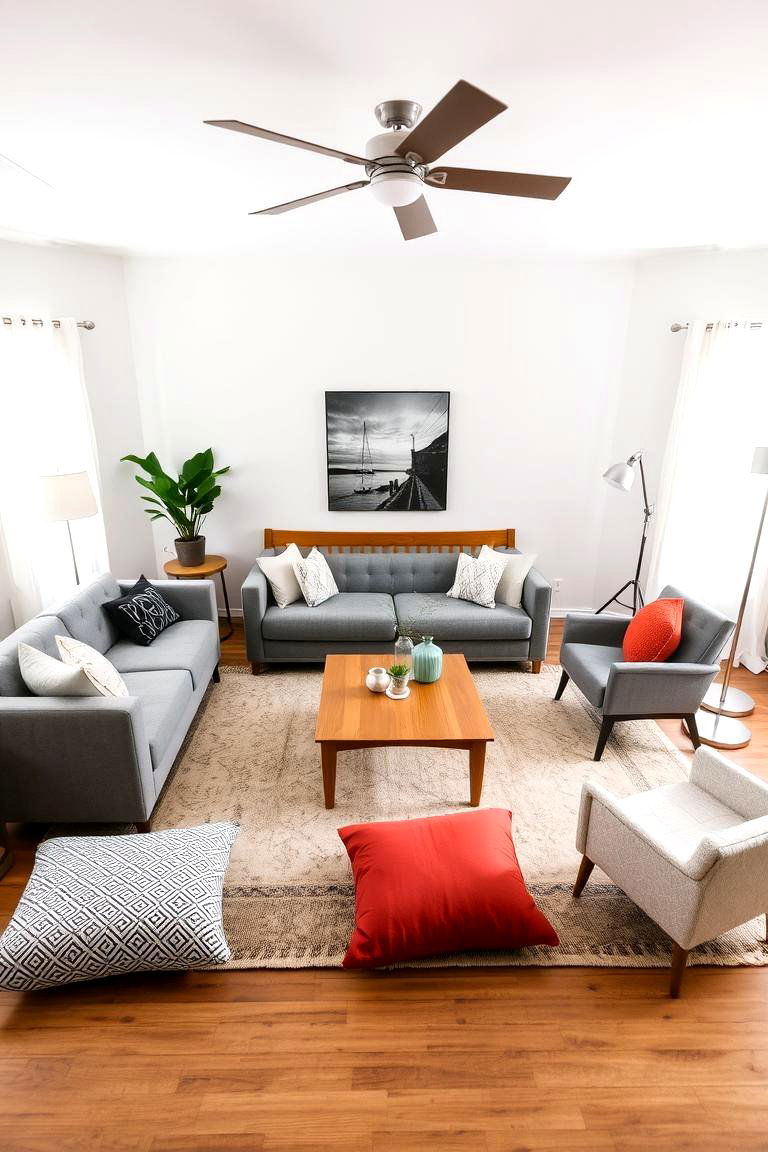
Finally, consider a living room layout that incorporates a variety of seating options, such as a sofa, armchairs, and even a bench or floor cushions. This approach offers flexibility and caters to different needs and preferences. It also adds visual interest and can make the room feel more dynamic and inviting. Arrange the seating to encourage conversation and create comfortable zones for various activities, ensuring a well-rounded and functional living space.
Conclusion:
Exploring these diverse 24 Living Room Layout Ideas reveals the myriad possibilities for transforming your living space. From fostering intimate conversations to maximizing functionality in compact areas, the right arrangement can significantly impact the comfort and appeal of your home's central gathering spot. By considering your lifestyle, the size of your room, and your personal style, you can discover the perfect layout to create a living room that truly reflects your needs and aesthetic preferences.


